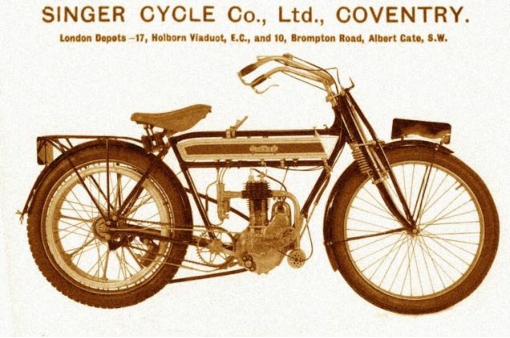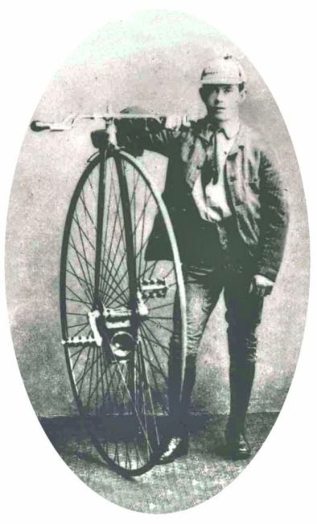
George Hedgecock, Shoreham’s popular bootmaker in East Street during the first half of the twentieth century was one of the town’s first cycling enthusiasts in the 1880’s taking part in races on his penny-farthing cycle.
In his 40’s he adapted his interest to motorised cycling and purchased a Singer motorcycle and sidecar possibly from Reg Eley’s garage – Reg was a fellow member of Shoreham’s motorcycling club and an agent for Singer Motorcycles.
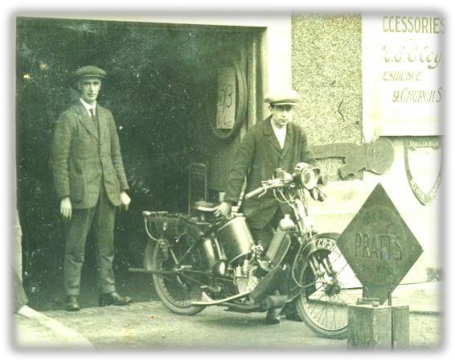
The cost for the motorbike new was £48.16s.0d for a Roadster (a Racing Model was one shilling less) and a top of the range three speed model was £58.15s.0d. Petrol could be purchased for 1/6d a gallon and 3d of that was tax that had recently been imposed (1909) for the first time by Lloyd George’s government.
Even at the age of 47 George Hedgecock still possessed the spirit of adventure and yearned for something more than club competitions and Sunday runs out.
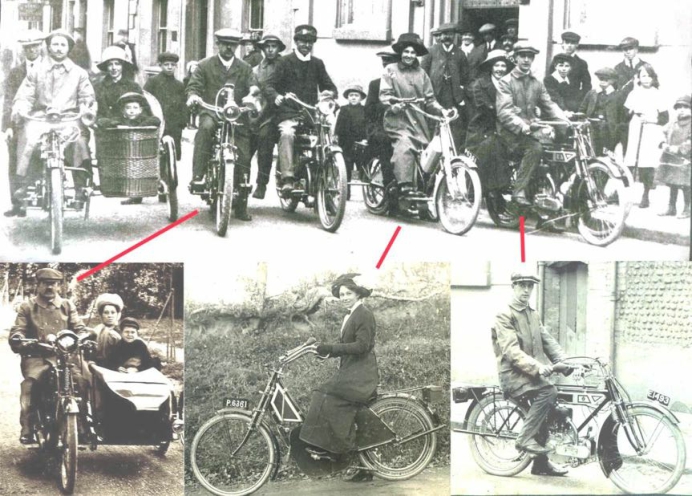
He hit on the idea of a marathon (for those days) journey to Edinburgh and back, enlisted an old Shoreham friend now living in Hove – Fred Miles, a newspaper reporter and sub editor for the Argus – as navigator, purser and keeper of the journal recording their progress with George responsible for the driving and all things mechanical as and when necessary.
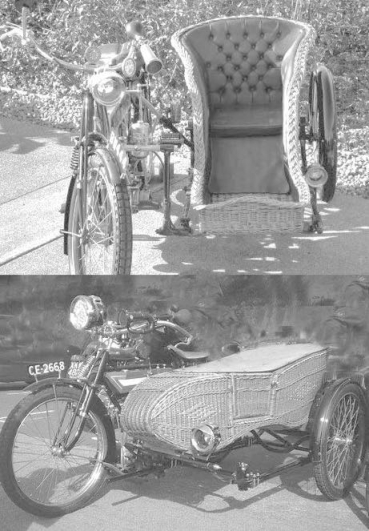
George’s Singer had the registration number BP1480, a 4 horsepower 123 cc engine that was only a little more powerful than today’s mopeds and bicycle-type pedals necessary for added power from the rider in order to make the inclines on steeper hills. The sidecar was a wickerwork basket type – there were many different varieties at that time ranging from open chair-like seats (which must have been uncomfortable in cold, wet conditions) to the more conventional, bullet-shaped type.
The trip was to take two weeks, the ‘Motor Cycle’ magazine and ‘Daily Telegraph’ assisted by providing a route (pages 8 to 11) and at 11.05am on Sunday the 18th August 1912 they set off from Shoreham. Motoring by car or by motorcycle in those days was rarely trouble free and of course the further you travelled the more likely there were to be problems. In the days of inner tubes punctures were frequent and the two travellers had their fair share. Nuts worked their way loose, a cotter pin fell off preventing gear changes, a damaged engine valve had to be replaced and on one occasion the drive belt snapped. Incredibly, most of these were repaired by George at the roadside and no major breakdowns occurred during the whole trip. In those days many roads, particularly ‘B’ roads, were still not covered by asphalt, and in towns the streets were often still cobbled causing uncomfortable driving and even damage to the machine if driven too fast. Garages were less frequent and petrol sometimes had to be purchased from chemists or even pubs.
On top of these difficulties Messrs Hedgecock and Miles were also to experience non-mechanical setbacks. At Newcastle street urchins bombarded them with wooden cotton reels. Cattle strayed from the wide grass verges on to the Great North Road. Confusion and misunderstanding caused by differences between Sussex and Yorkshire dialects when seeking directions. Poor visibility, black coal dust everywhere and seemingly hundreds of chimneys belching choking smoke and darkening the skies when travelling through Wigan and Warrington. Slow, horse-drawn trams still being used in Oxford that obstructed the following trafffic causing long delays.
Despite all this there were many benefits to be enjoyed. – magnificent scenery as they travelled through the countryside, particularly in Scotland and the Lake District and even when trouble did occur there was an obvious camaraderie between fellow motorcyclists in those days and passers by would inevitably stop to offer and provide assistance. At Coventry George decided upon an overhaul or service at the Singer factory at Hillfields on the return journey that enabled the two to take a tour and see the new 1913 Singer models in various stages of production.
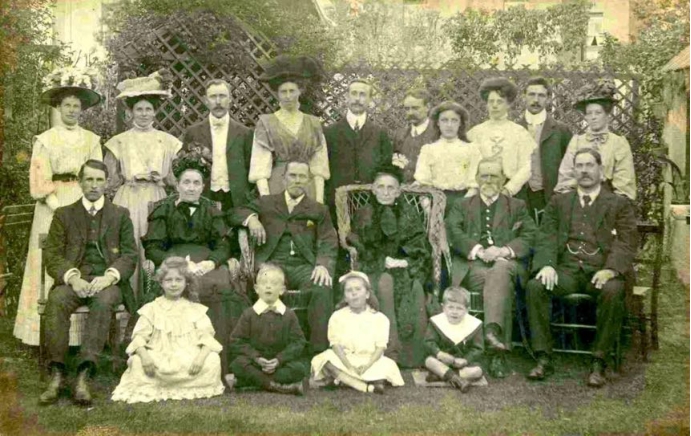
The journey had never been intended as a race and it is clear from Fred Miles’ comments that many more miles per day could have been achieved without difficulty. The Singer was capable of a maximum 44 mph but they appear to have kept their cruising speed generally much lower except for one straight stretch on the Great North Road when they achieved ‘30/35 mph and later considerably more’. The length of the journey was 1,111 miles and took 18 gallons of petrol to complete. A miserly fuel consumption of almost 62 mpg costing a grand total of £1-7s-0d – the approximate equivalent of £122 today.
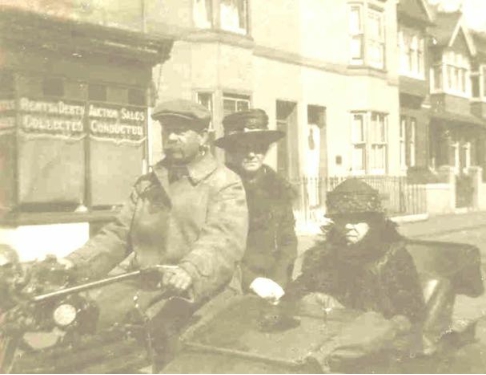
The original written journal has been recorded in digital form but is too large to be included in this article. Instead a more easily read typed transcript (itself an old record and possibly similar in age to the journal) has been used here.
The journal has been reproduced by kind permission of Jan Townsend, the daughter of Lilian Hedgecock, in order to make this unique historic record available to everyone. Please note however that the journal is fully protected by copyright and cannot be reproduced without permission.
Roger Bateman
Shoreham,
August 2012
NB. The story of the Bachelors’ Club referred to on page 64 can be seen in a contemporary booklet entitled ‘The Rise and Fall of Bachelors’ Hall’ (another rare Shoreham document). This includes a description of George’s cycle races in the 1880’s and a facsimile of it is also available for reference at West Sussex Library and on line at the history portal of the Shorehambysea.com website
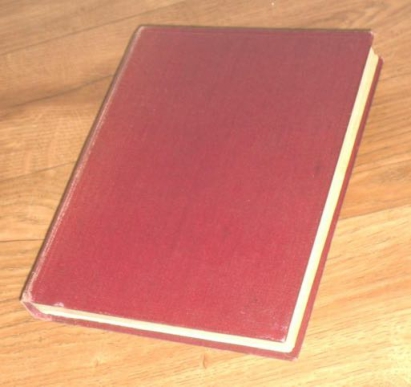
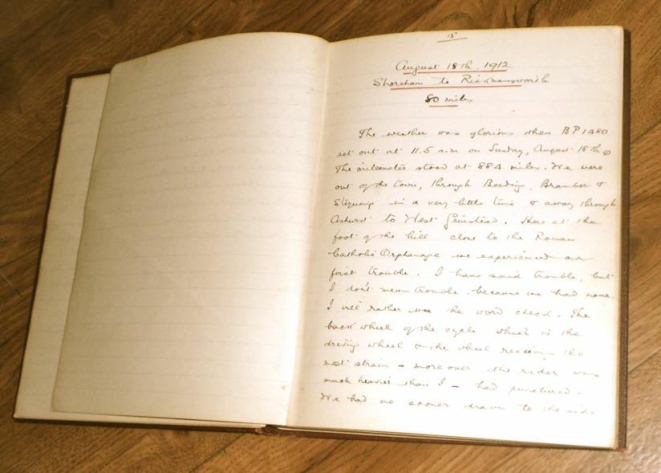
The Transcript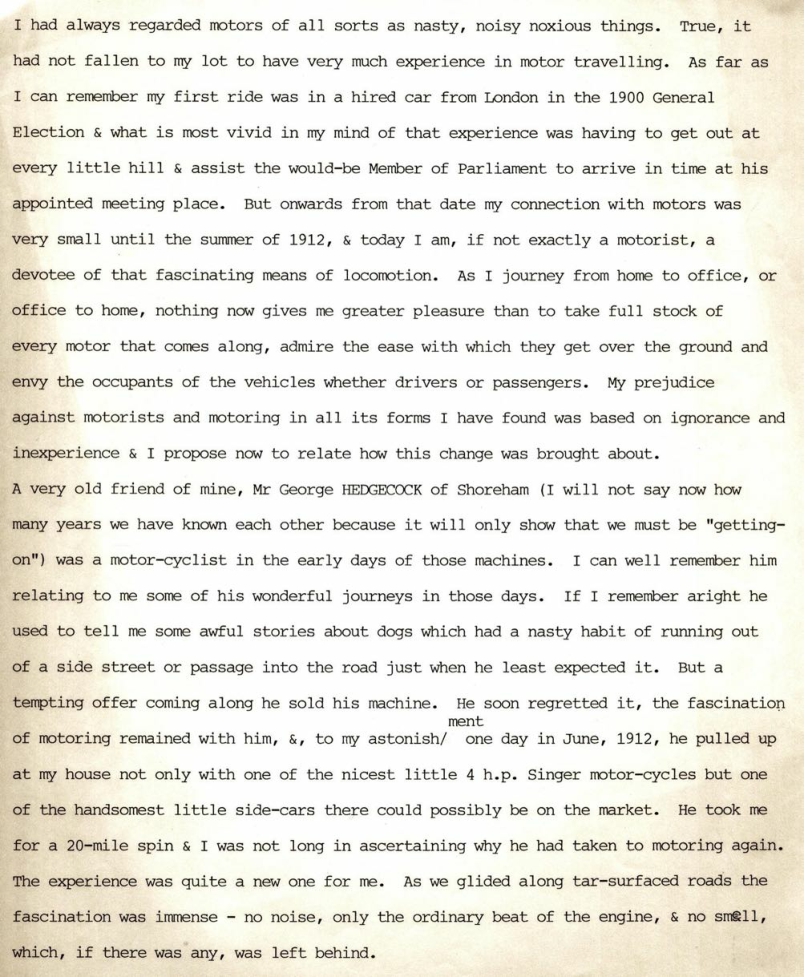
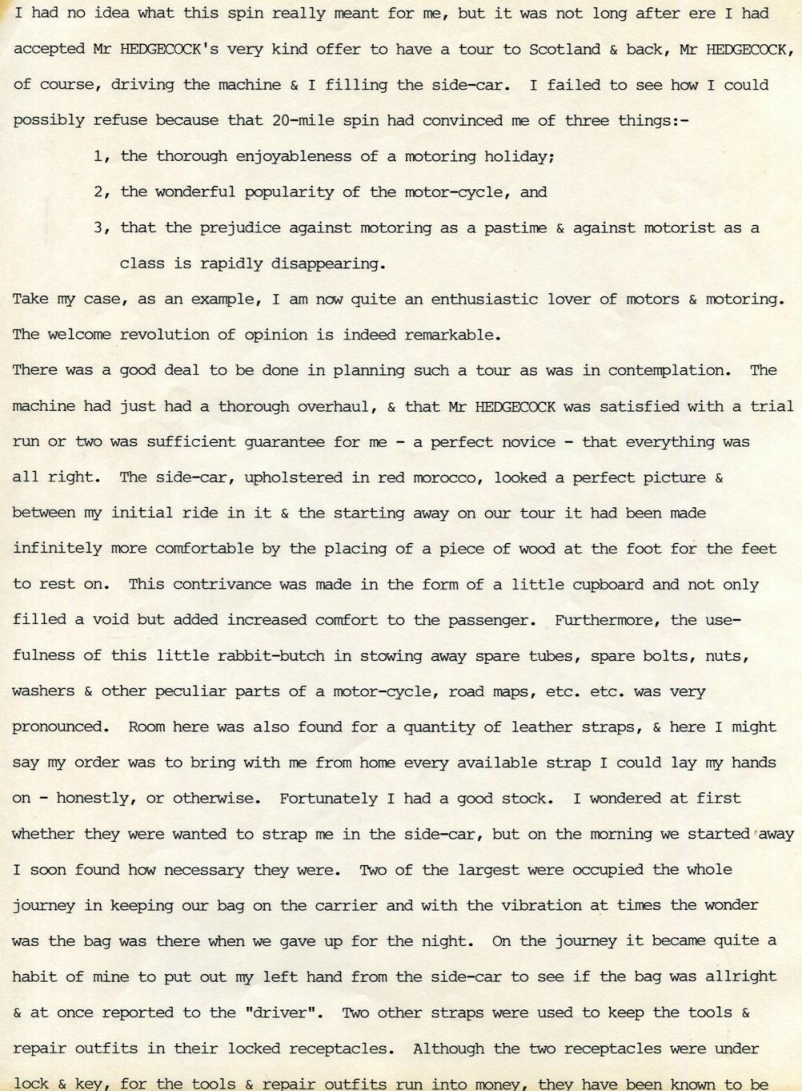
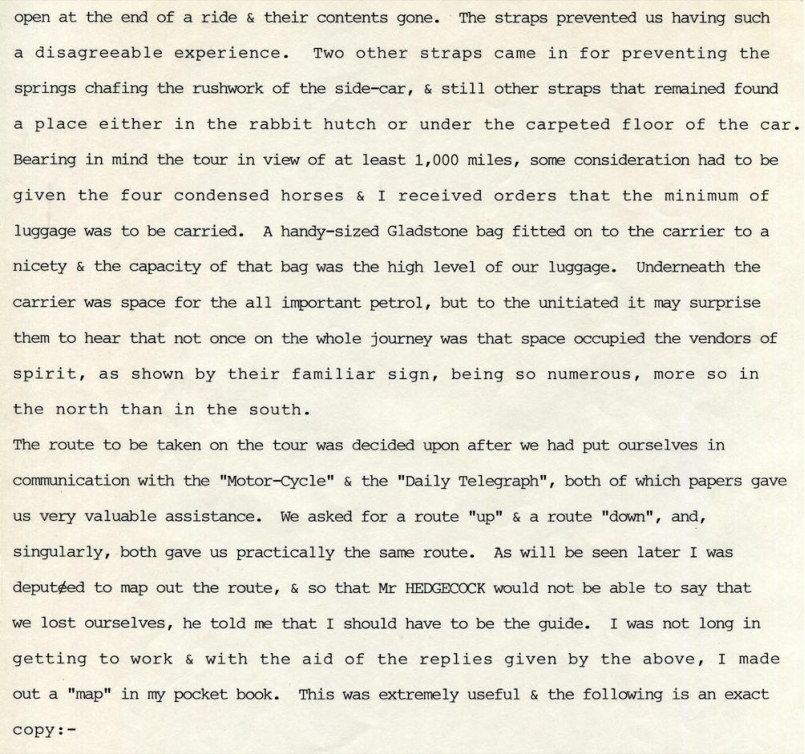
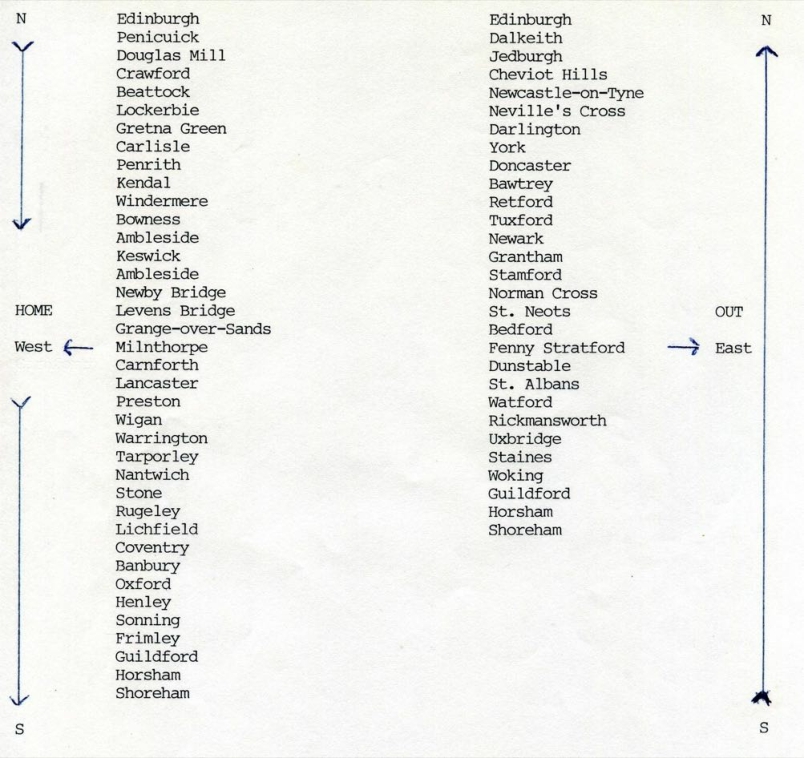
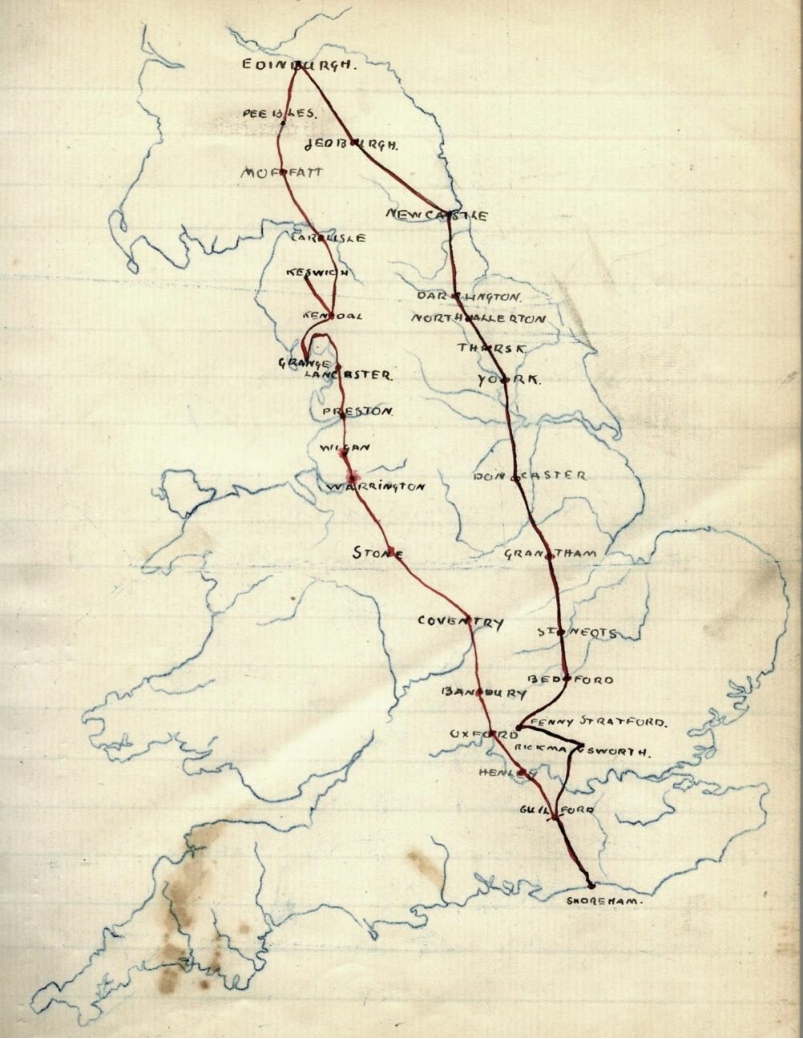
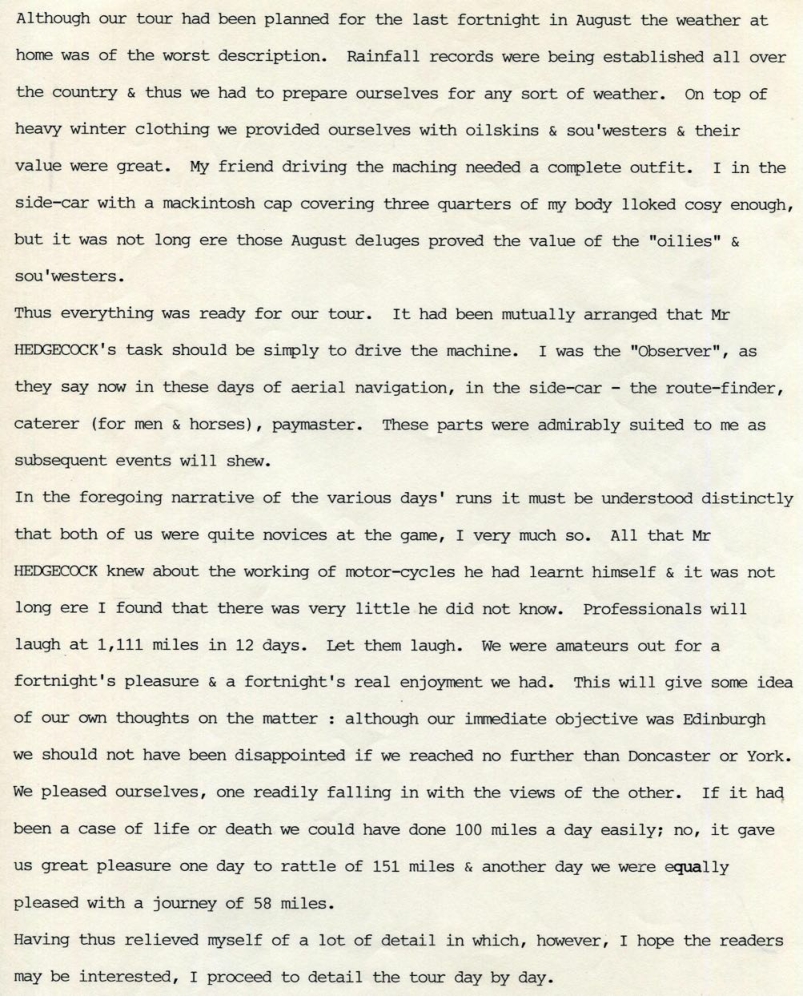
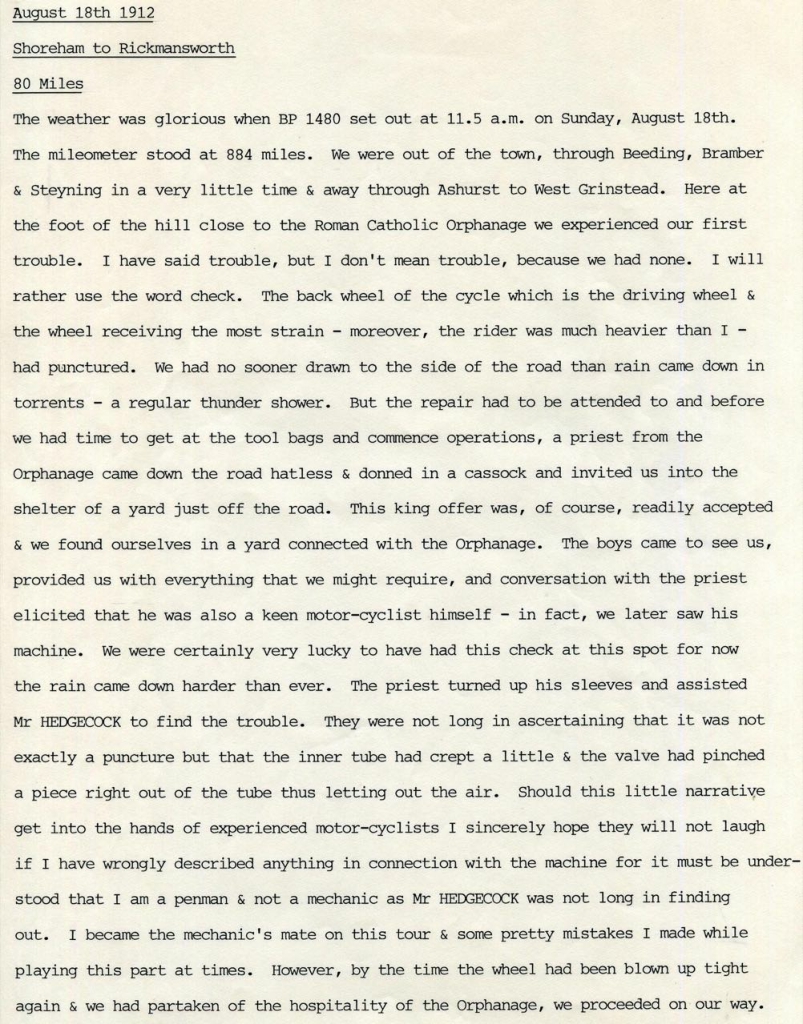
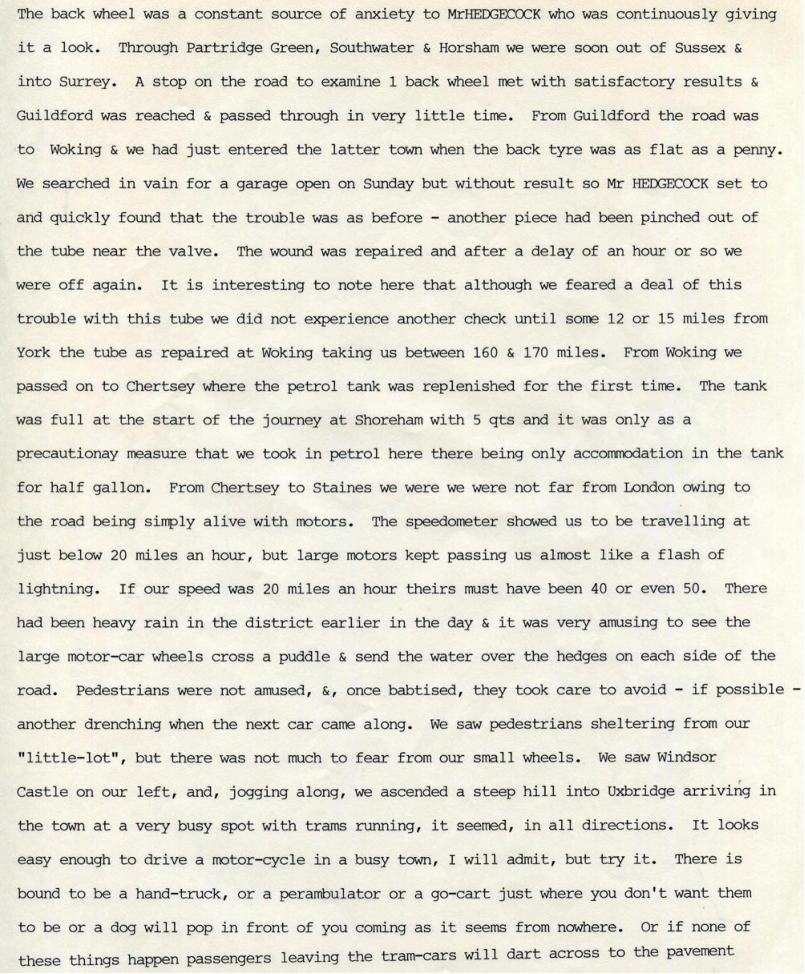
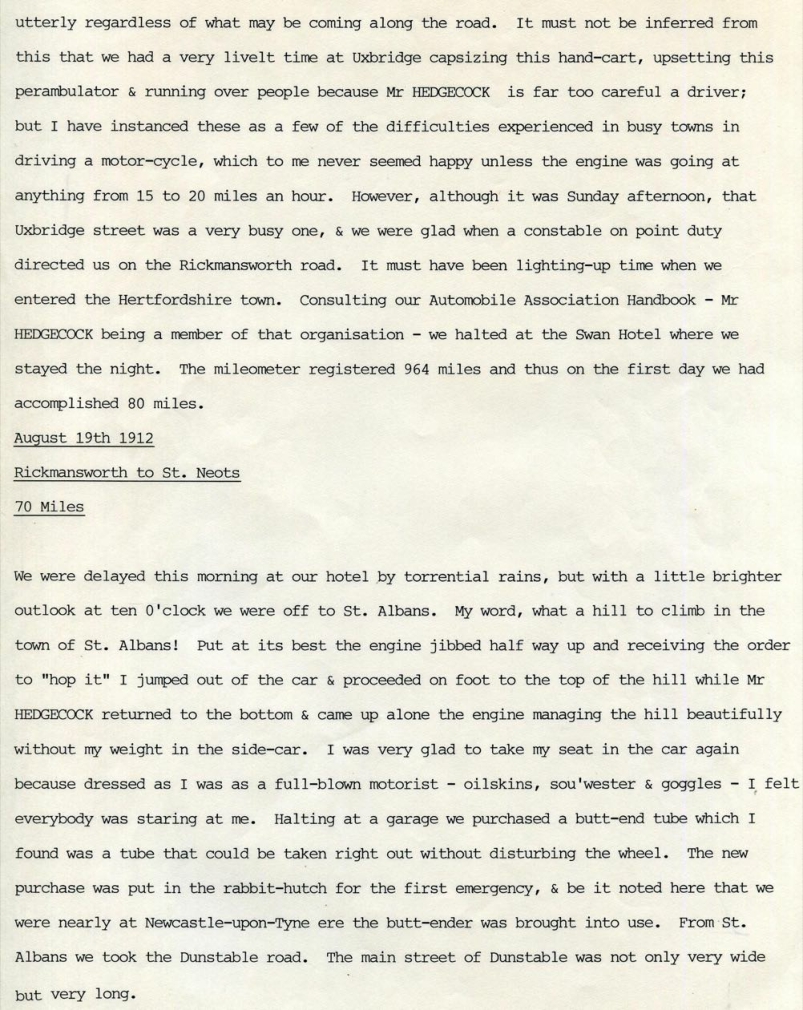
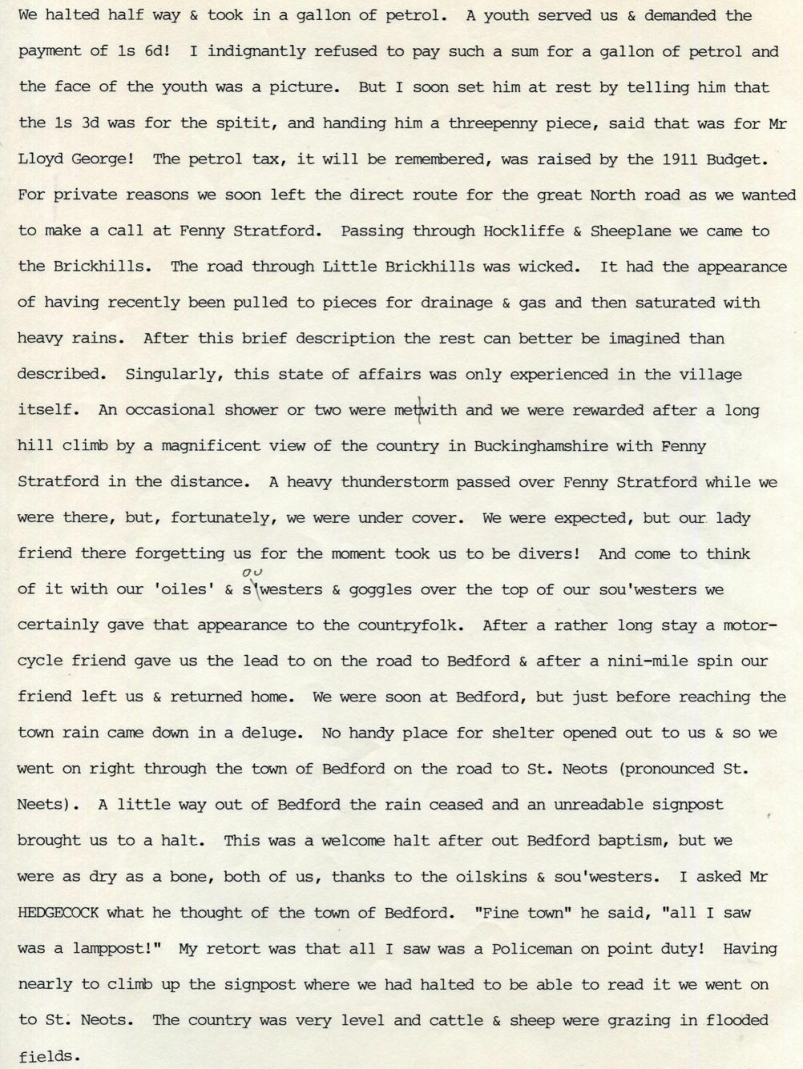

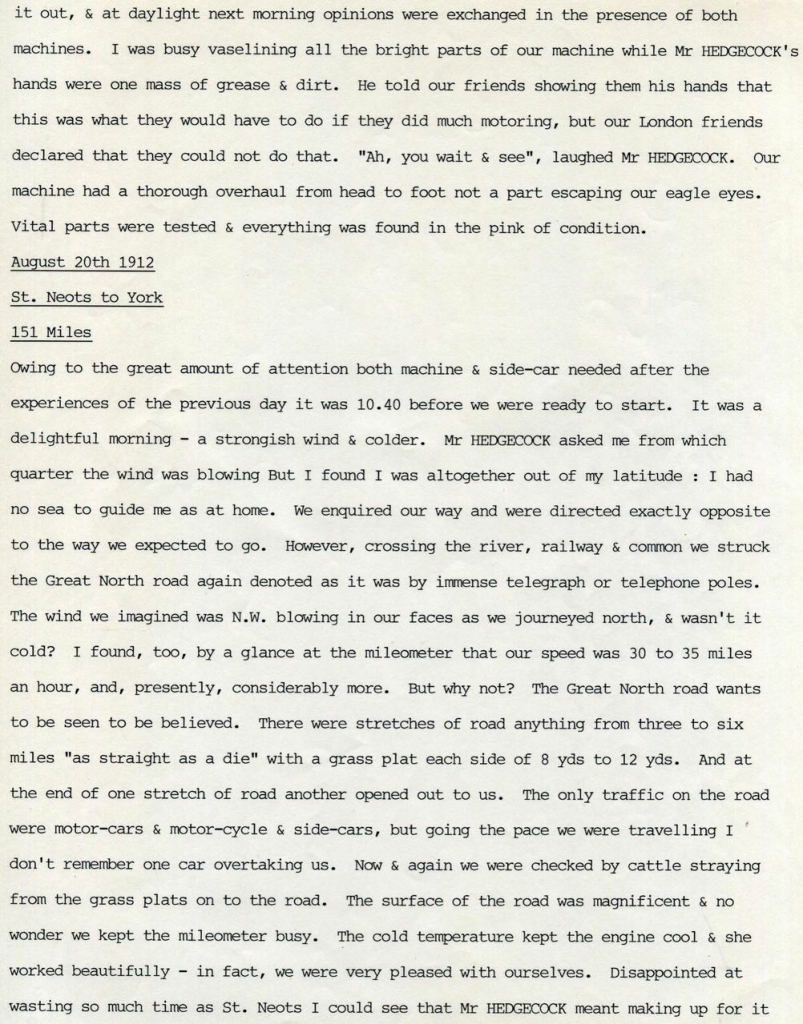
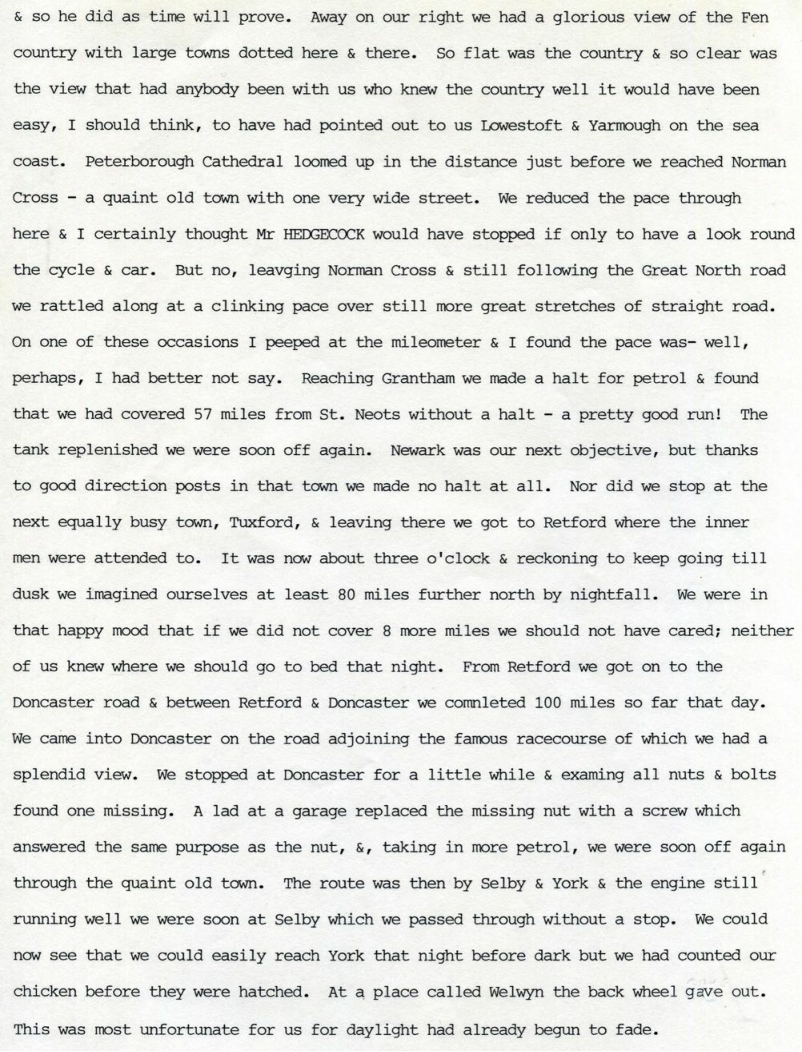
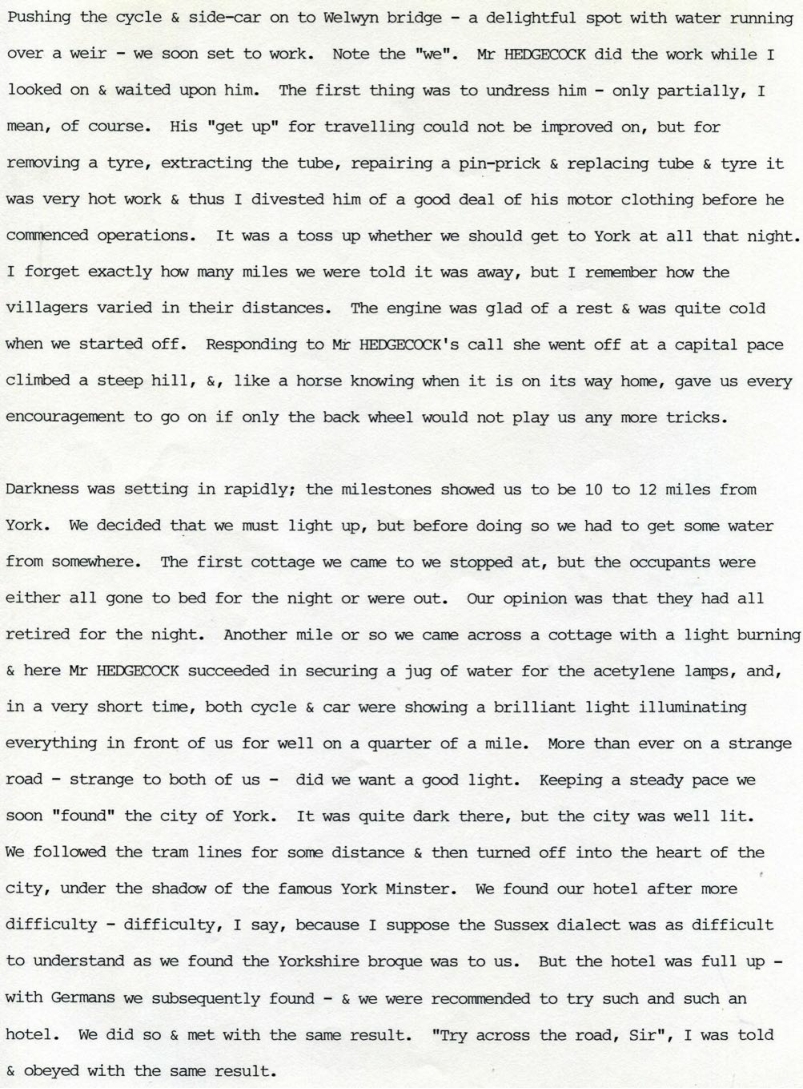
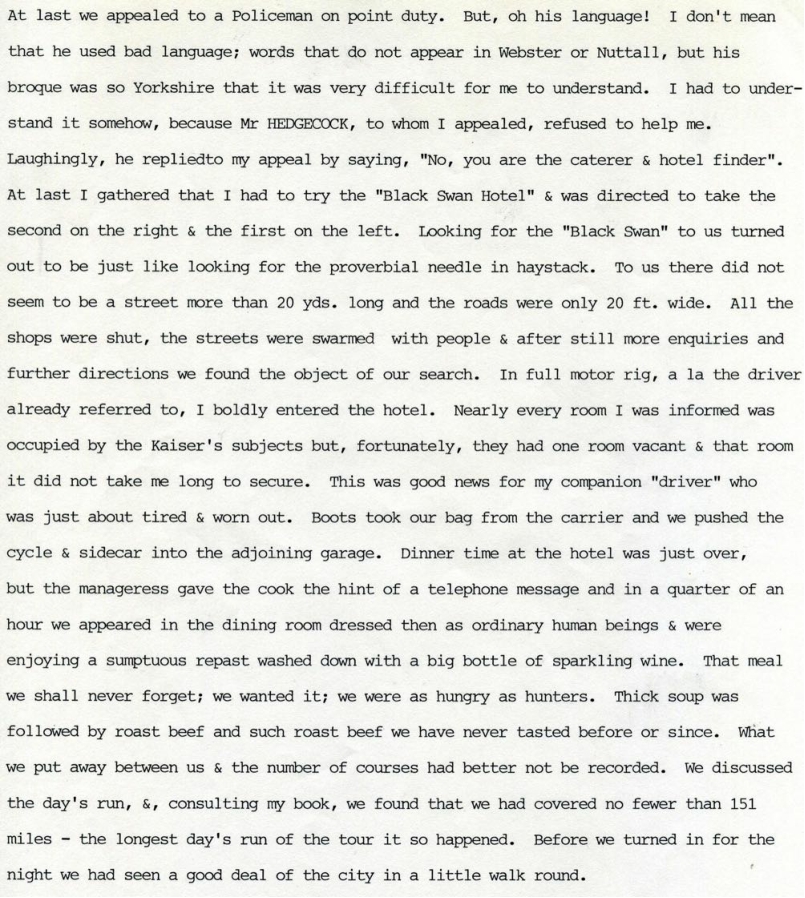
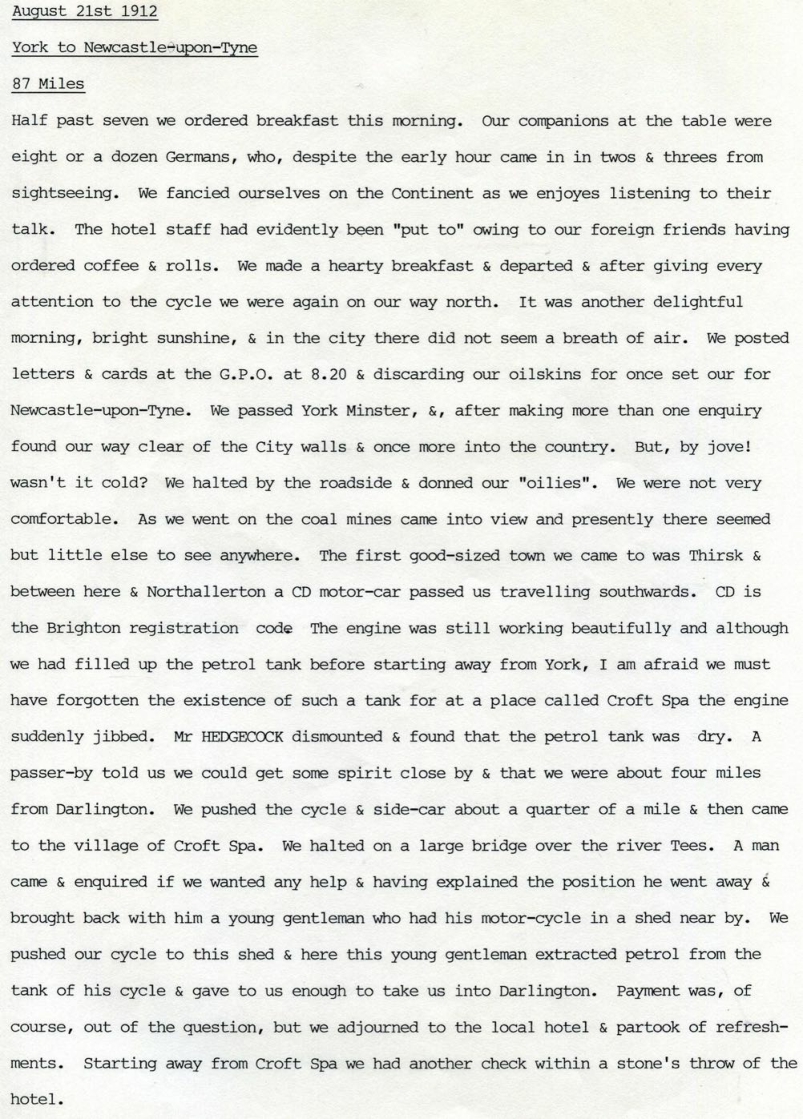
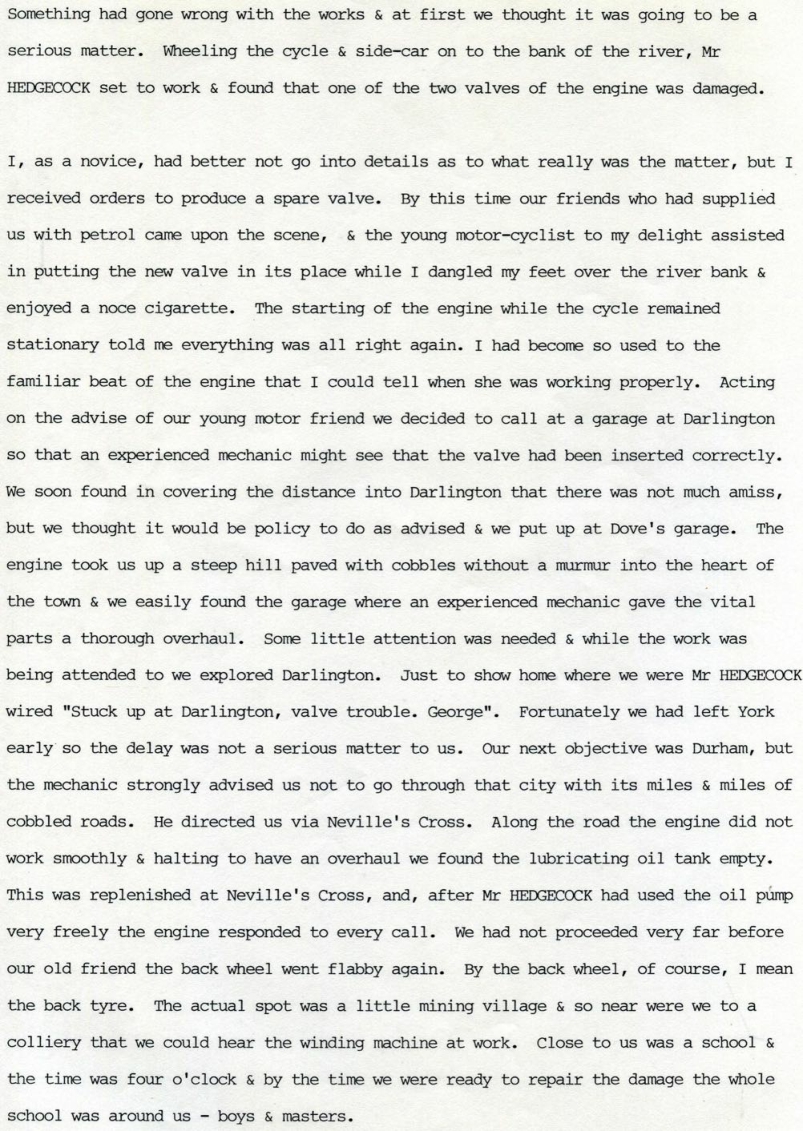
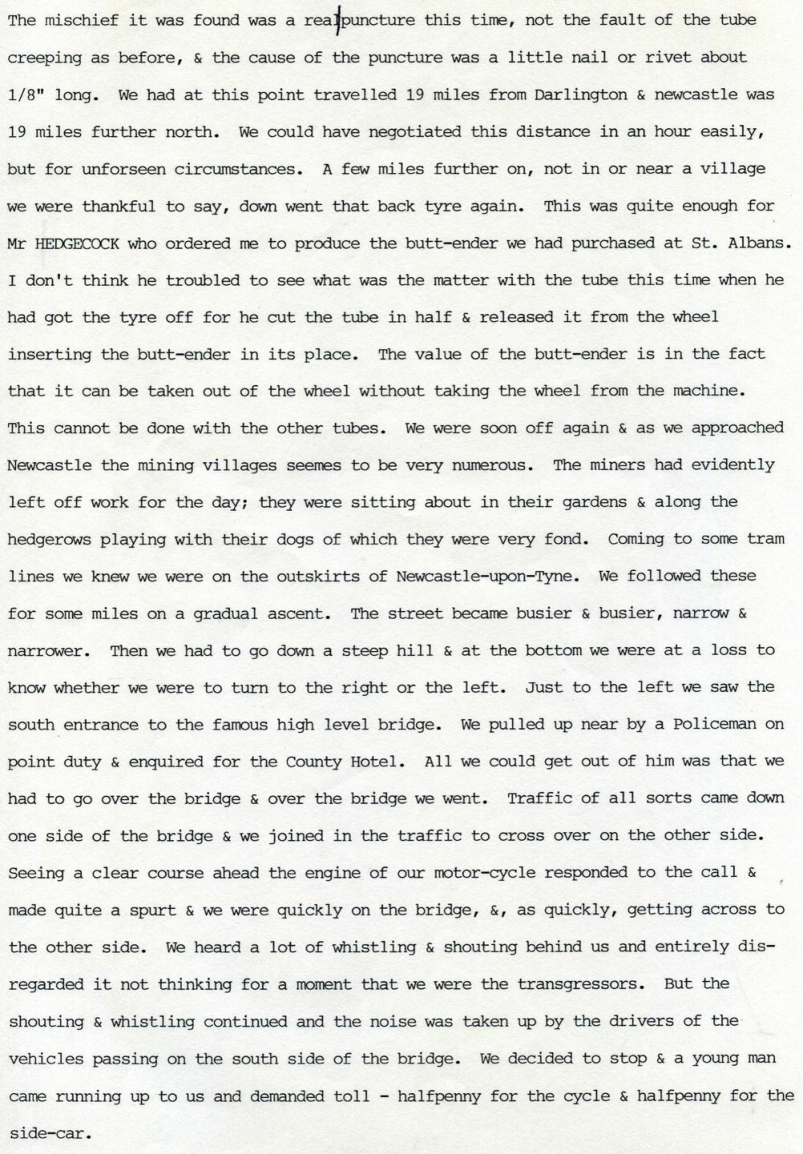
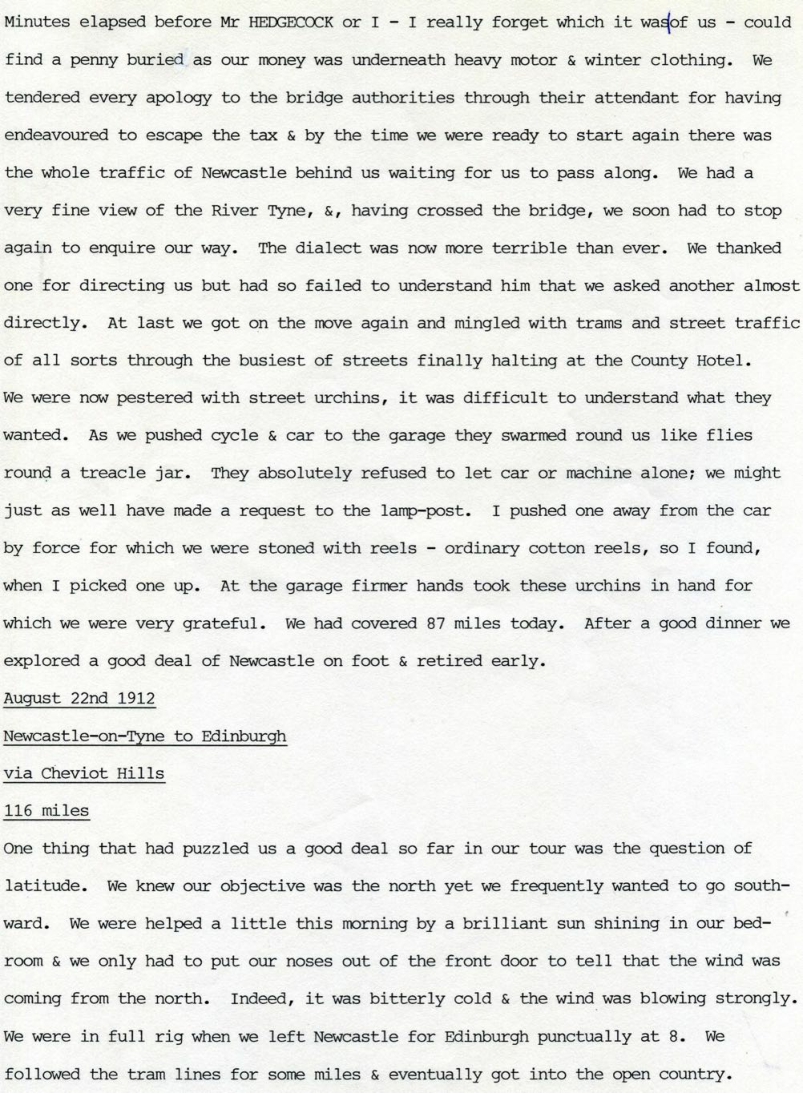
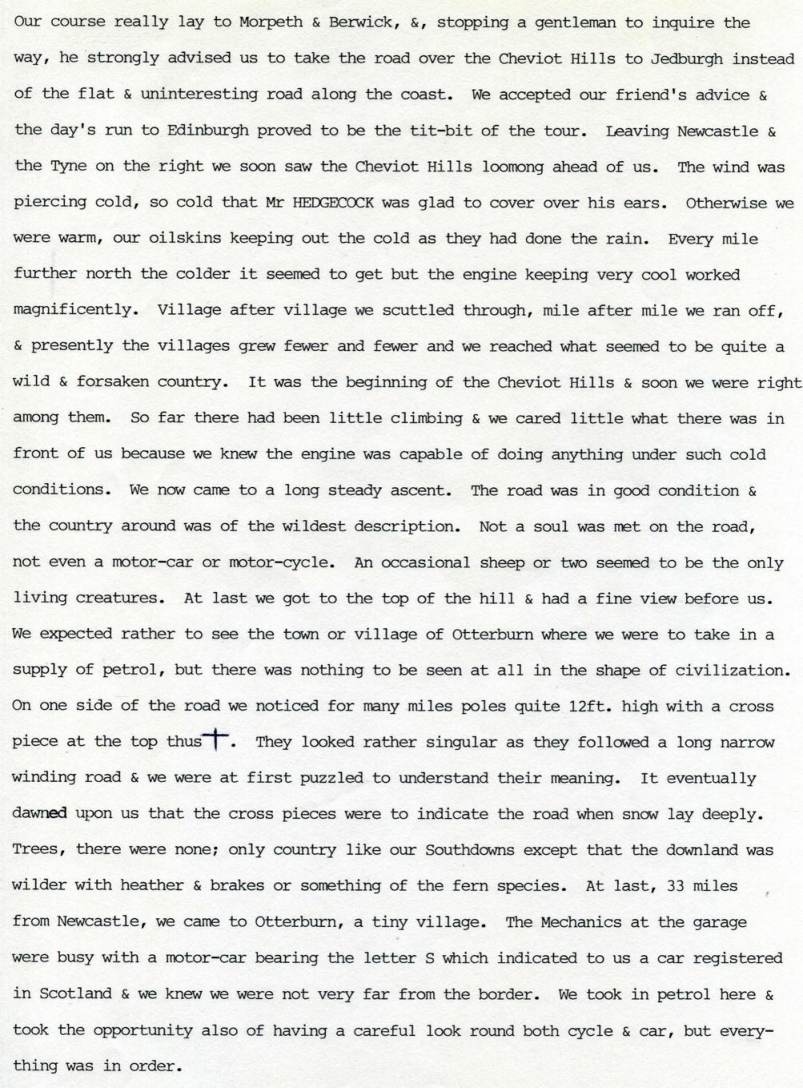
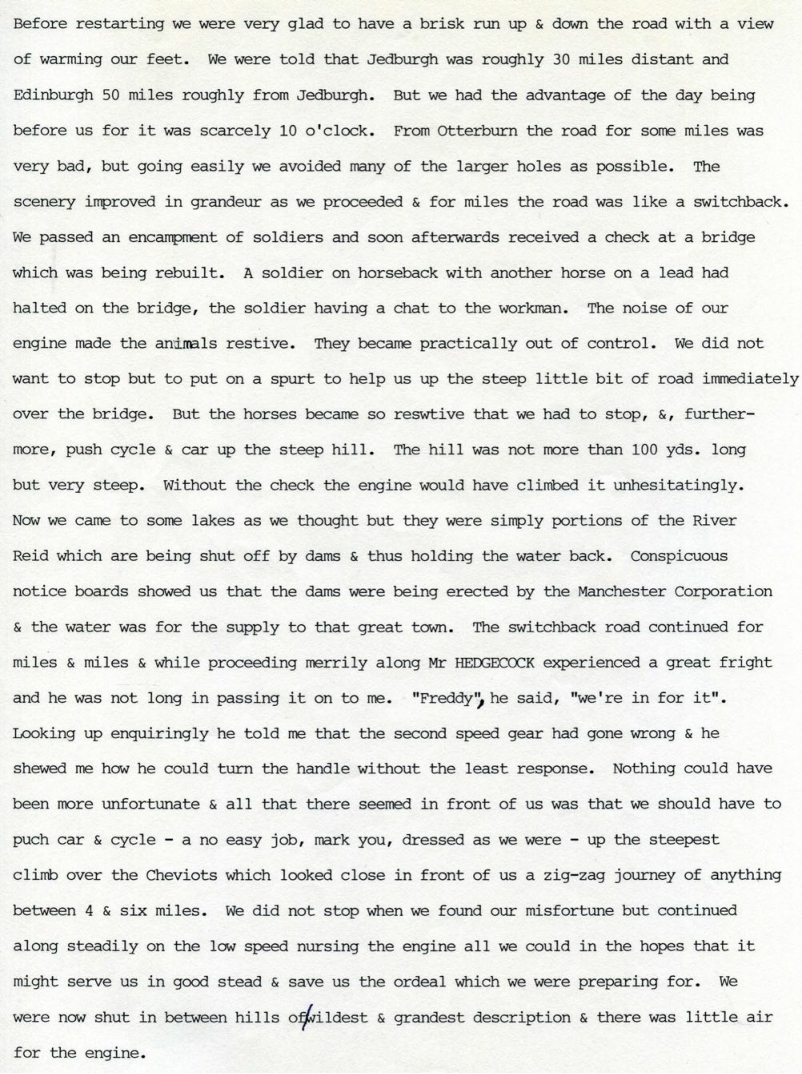
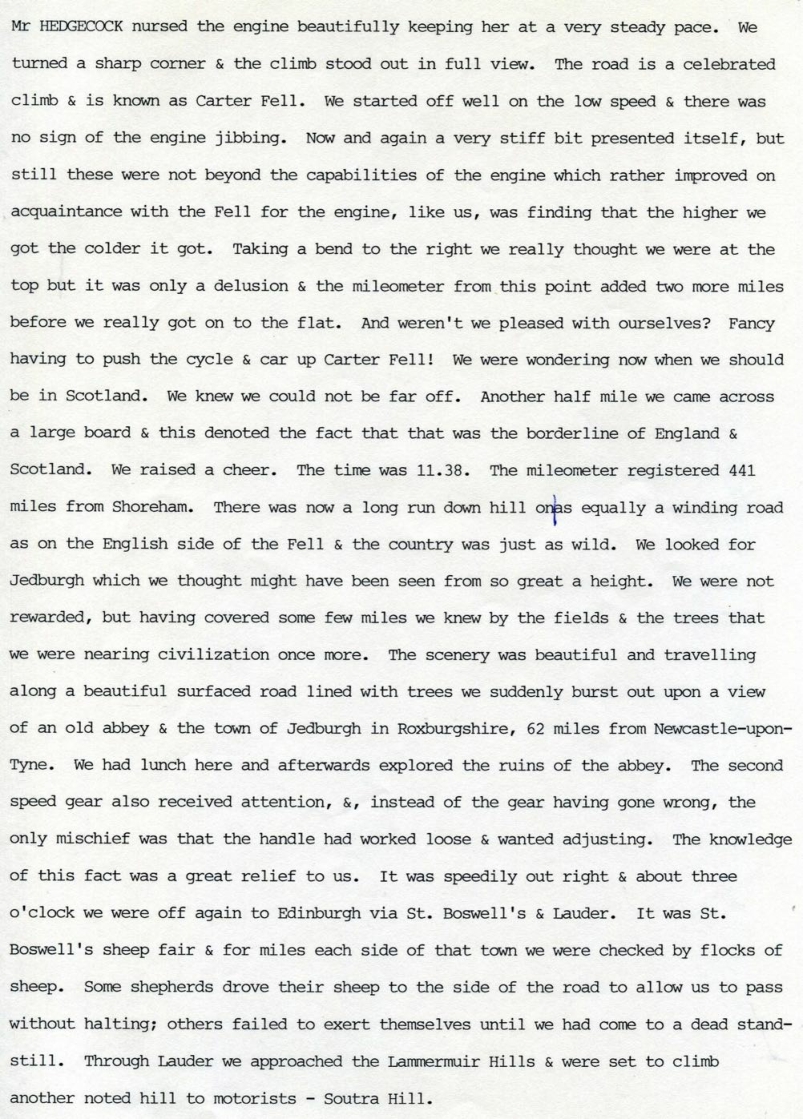
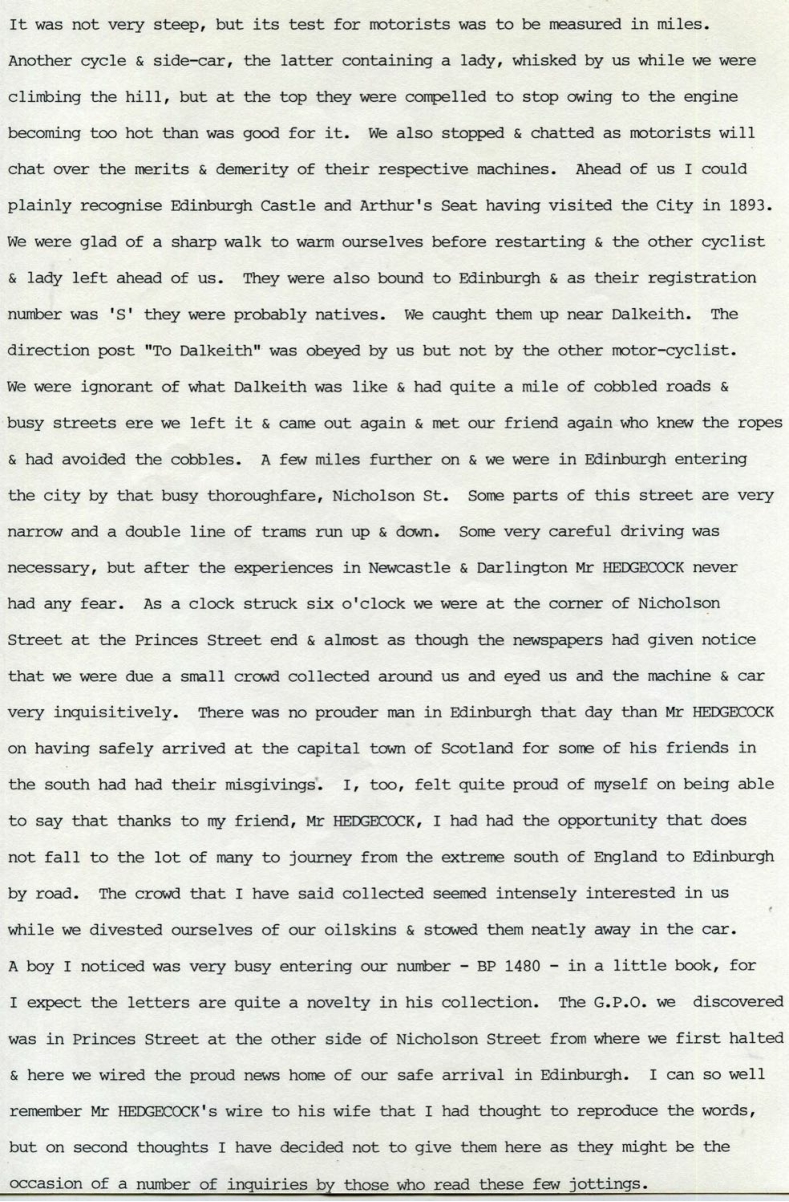
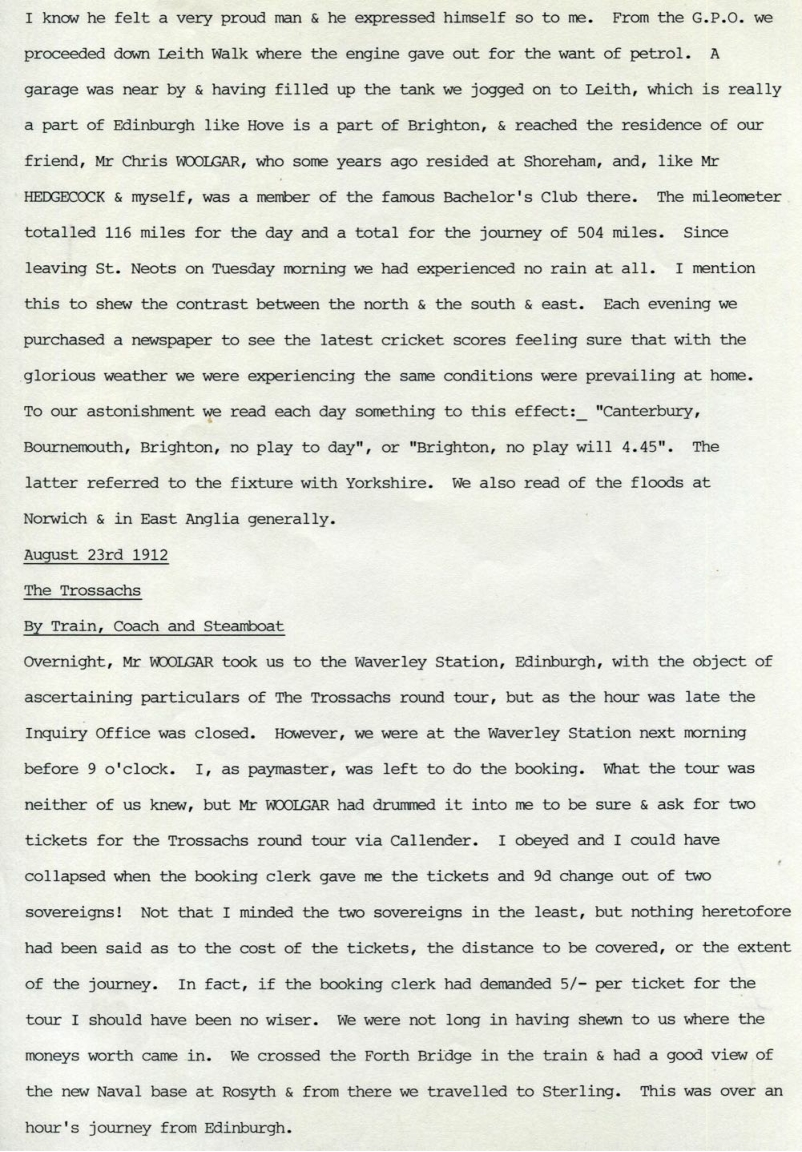
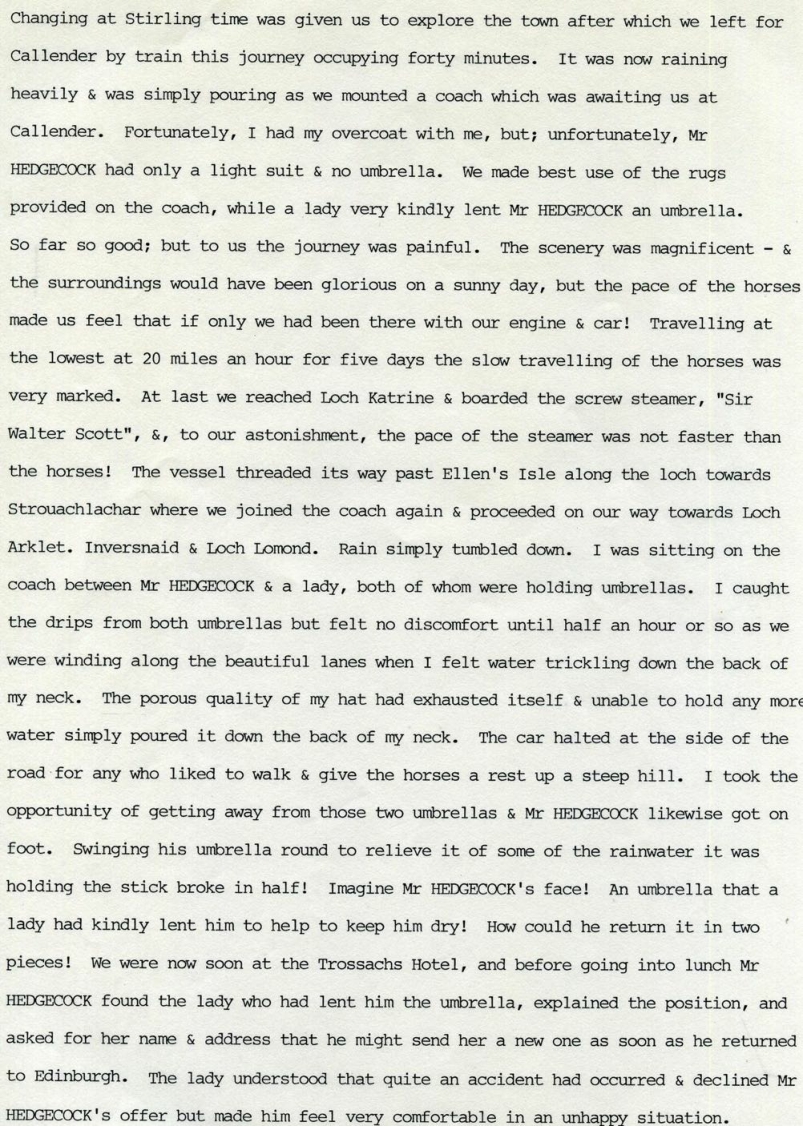
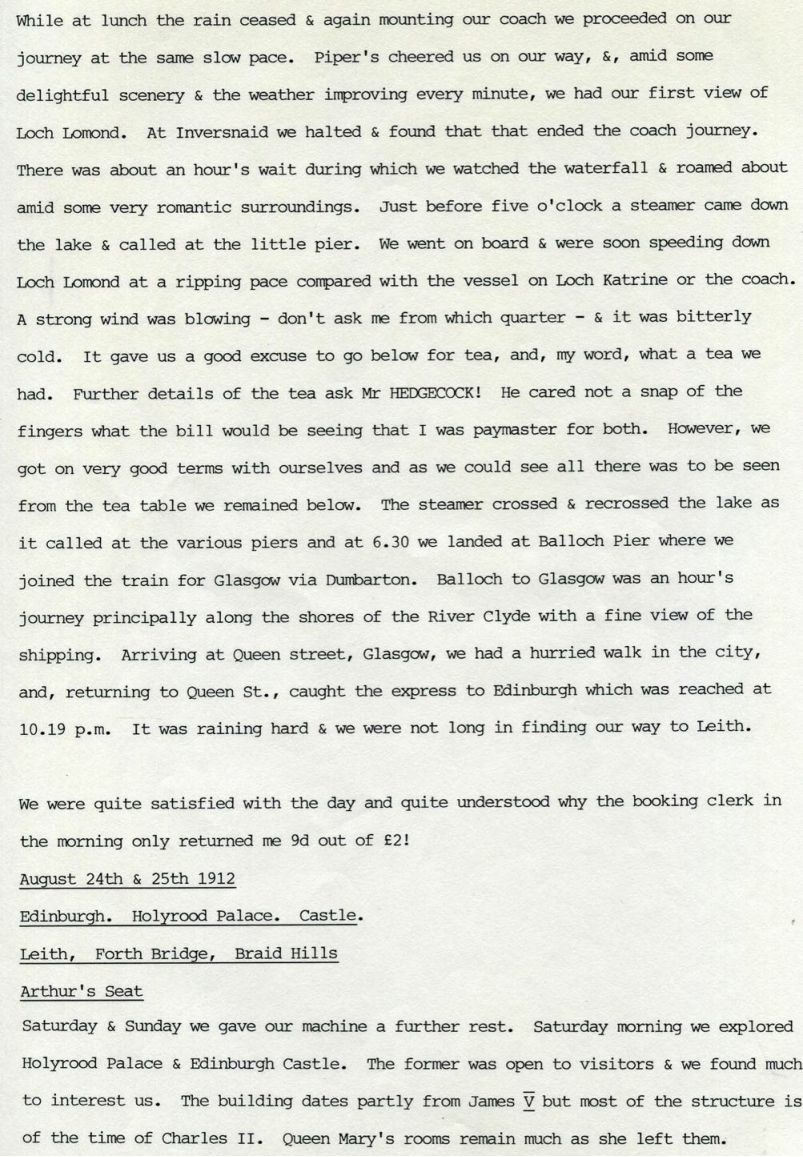
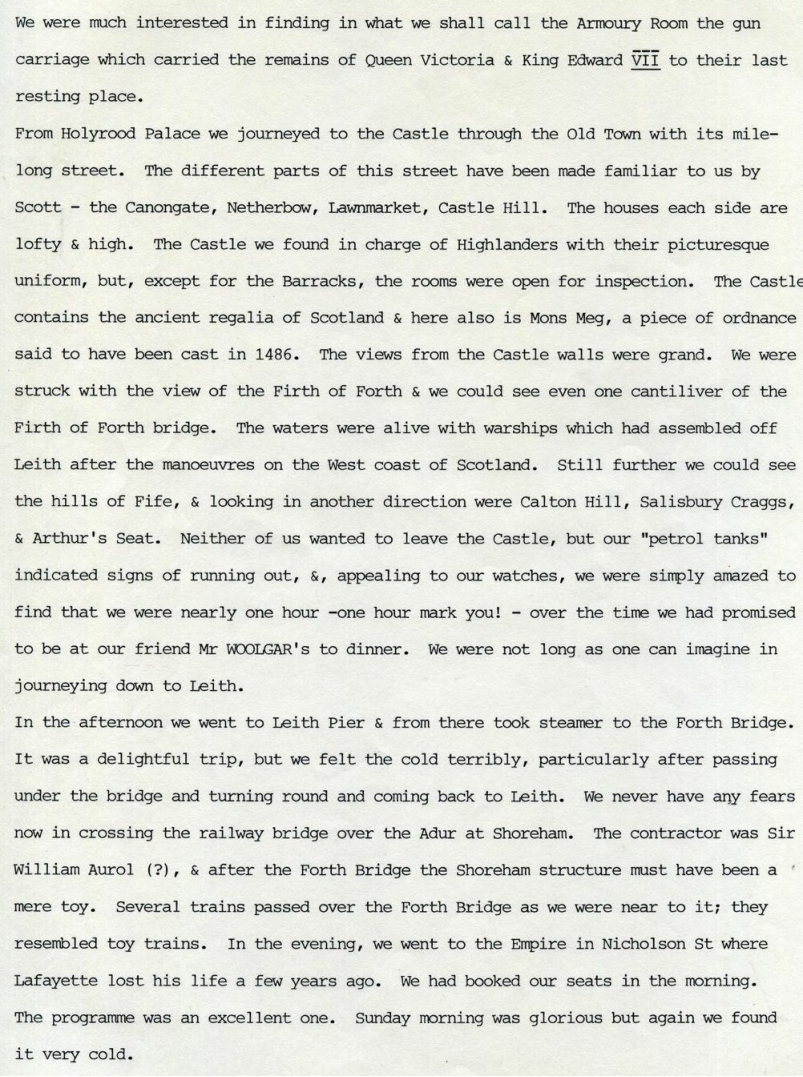
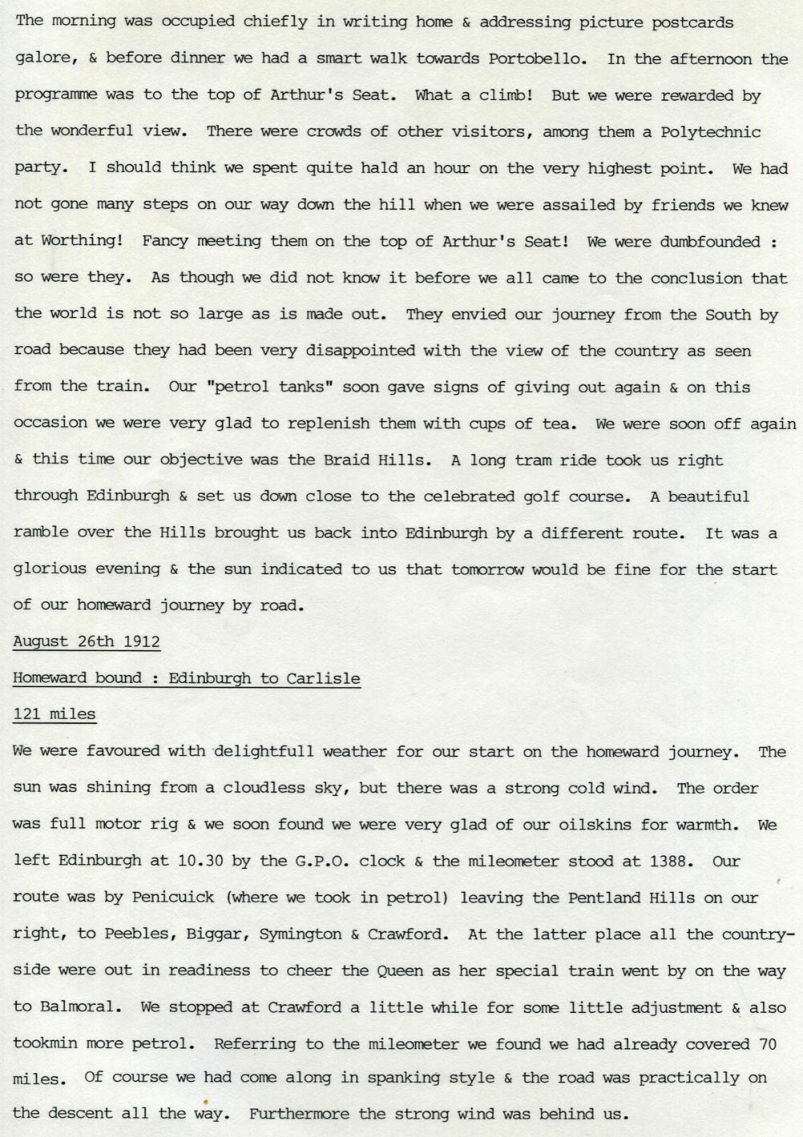
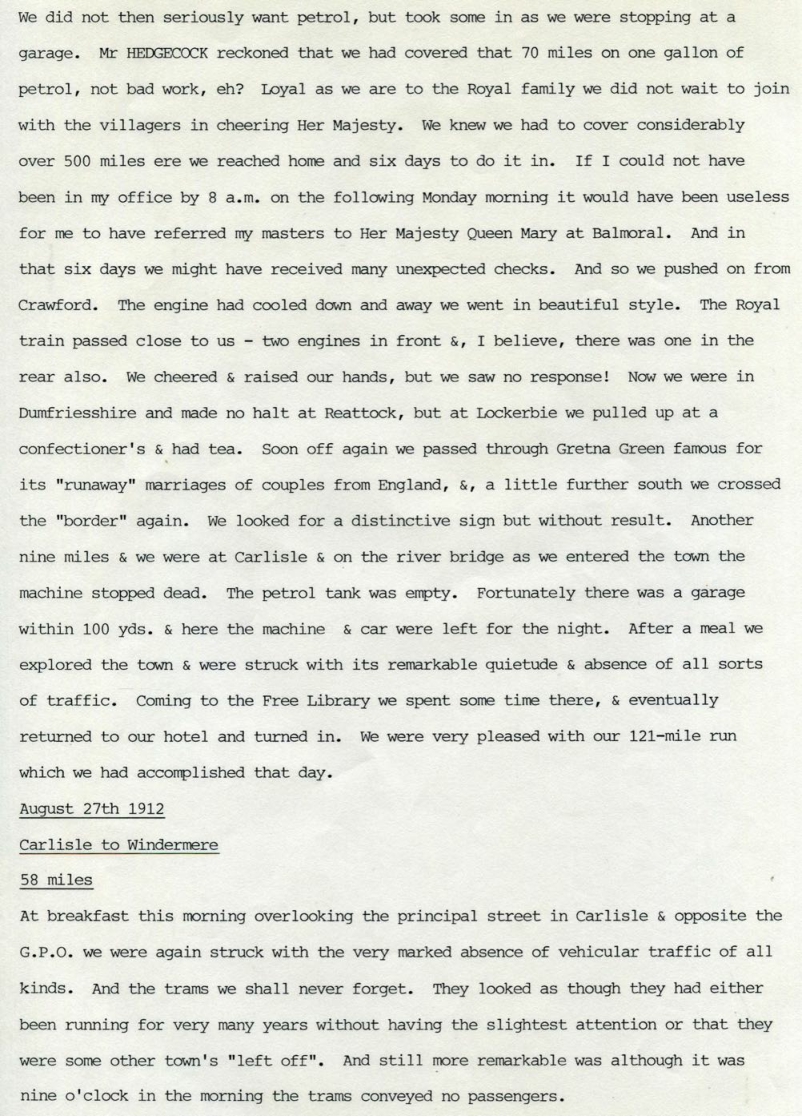
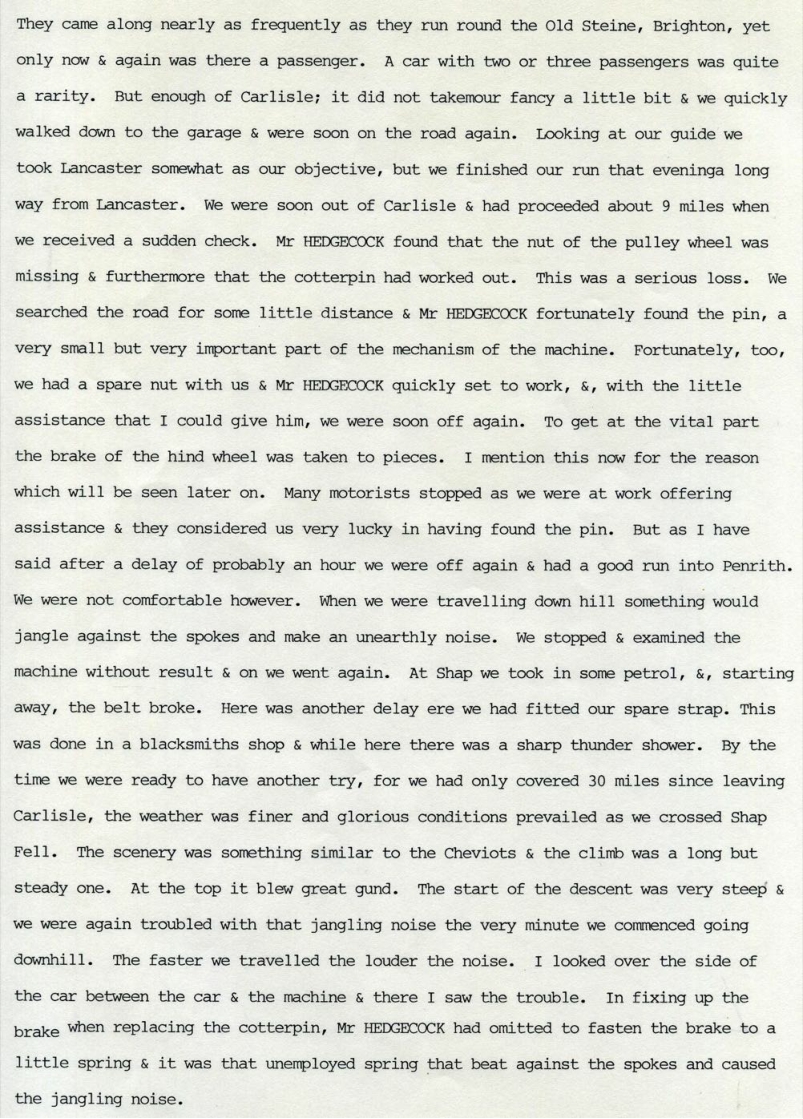
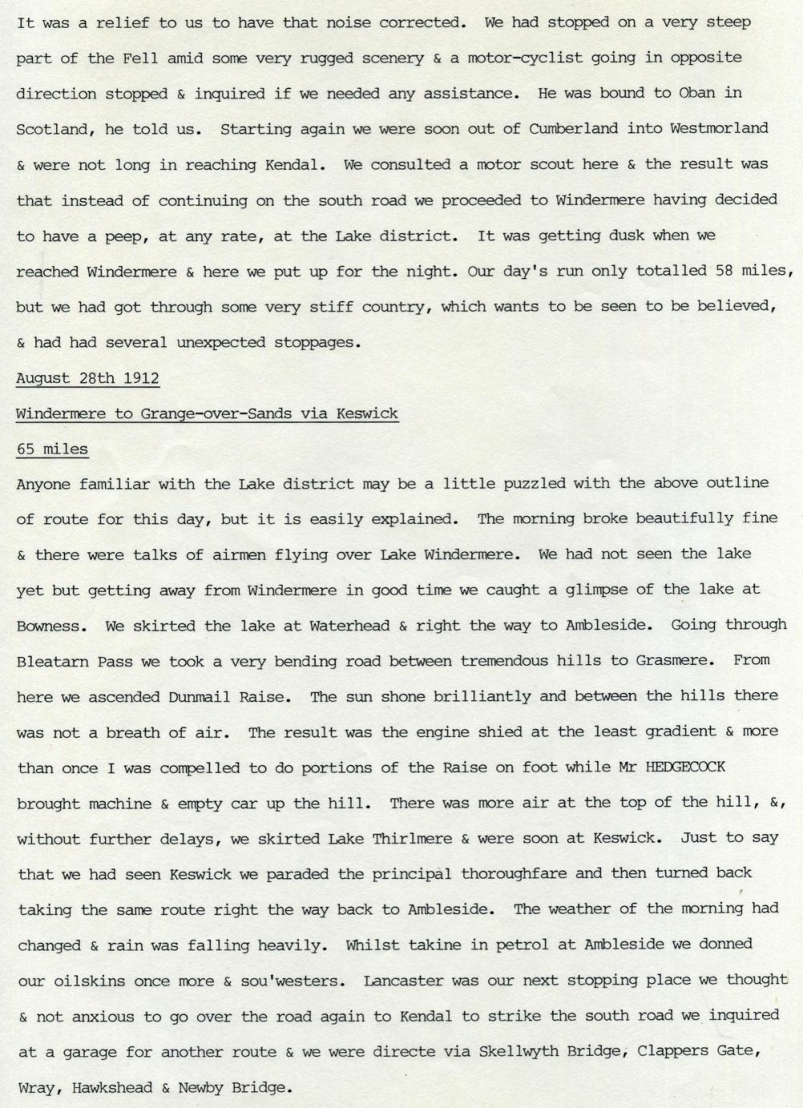
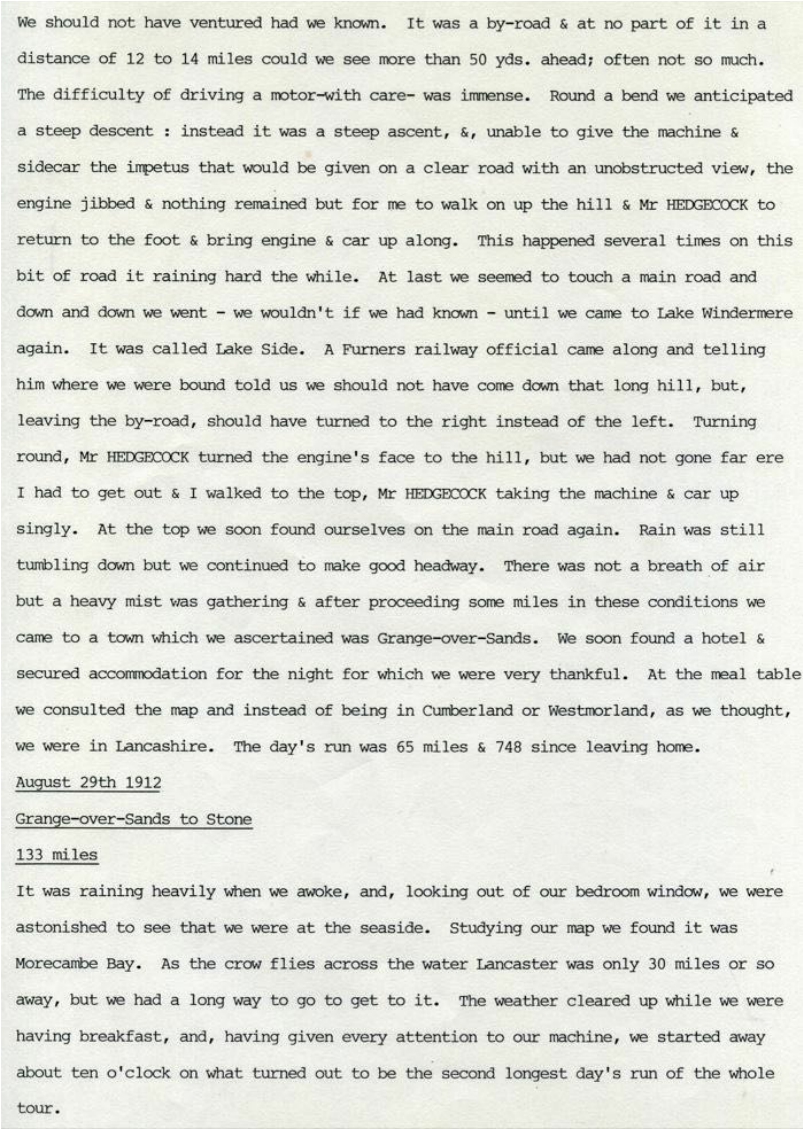
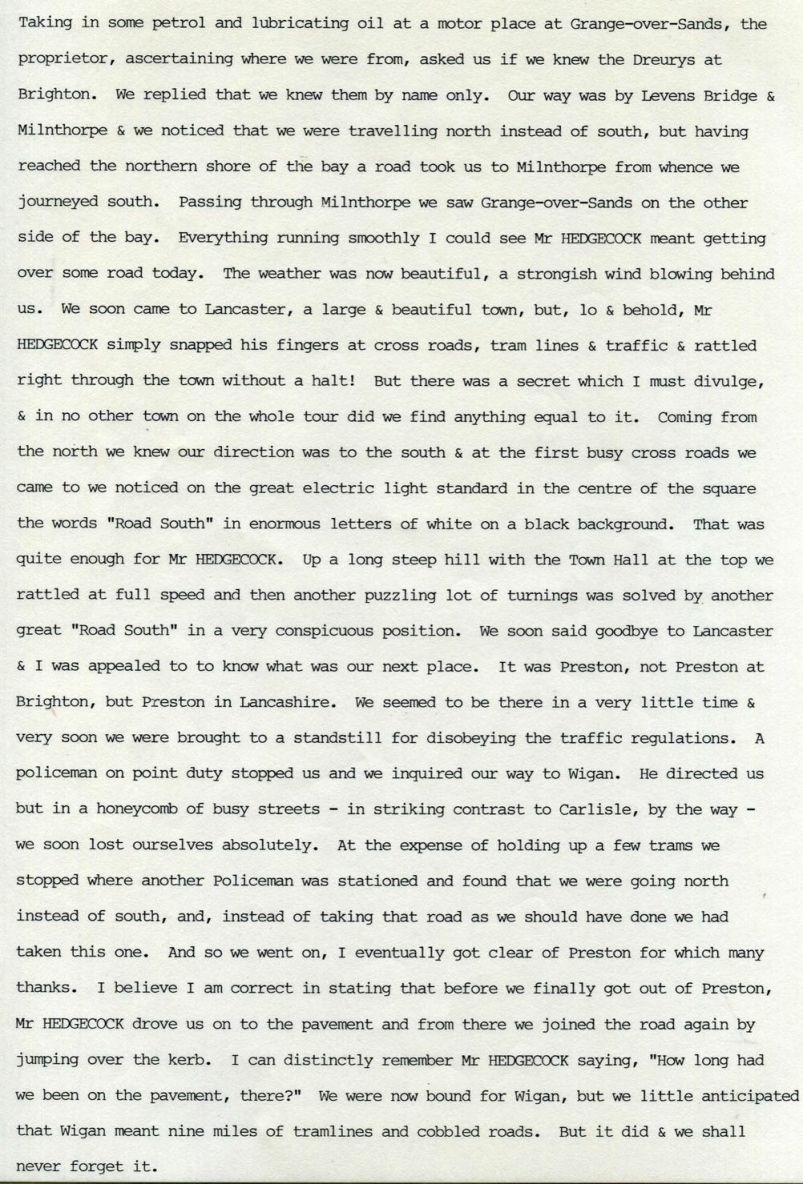
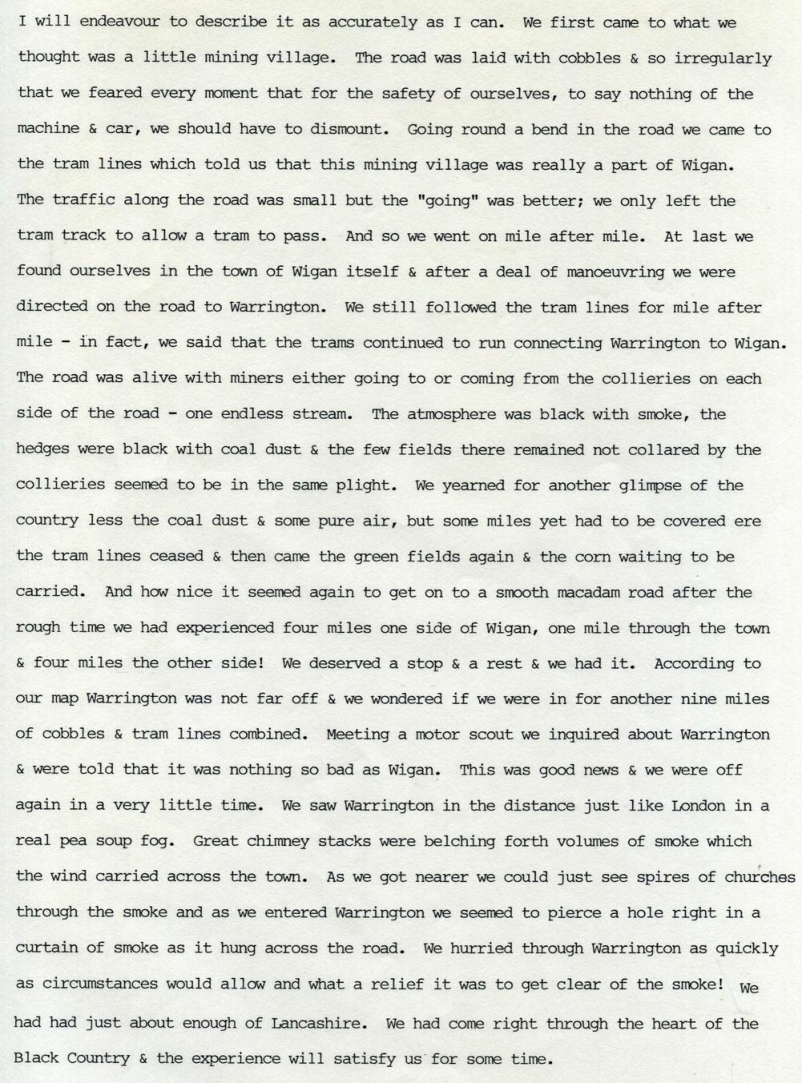
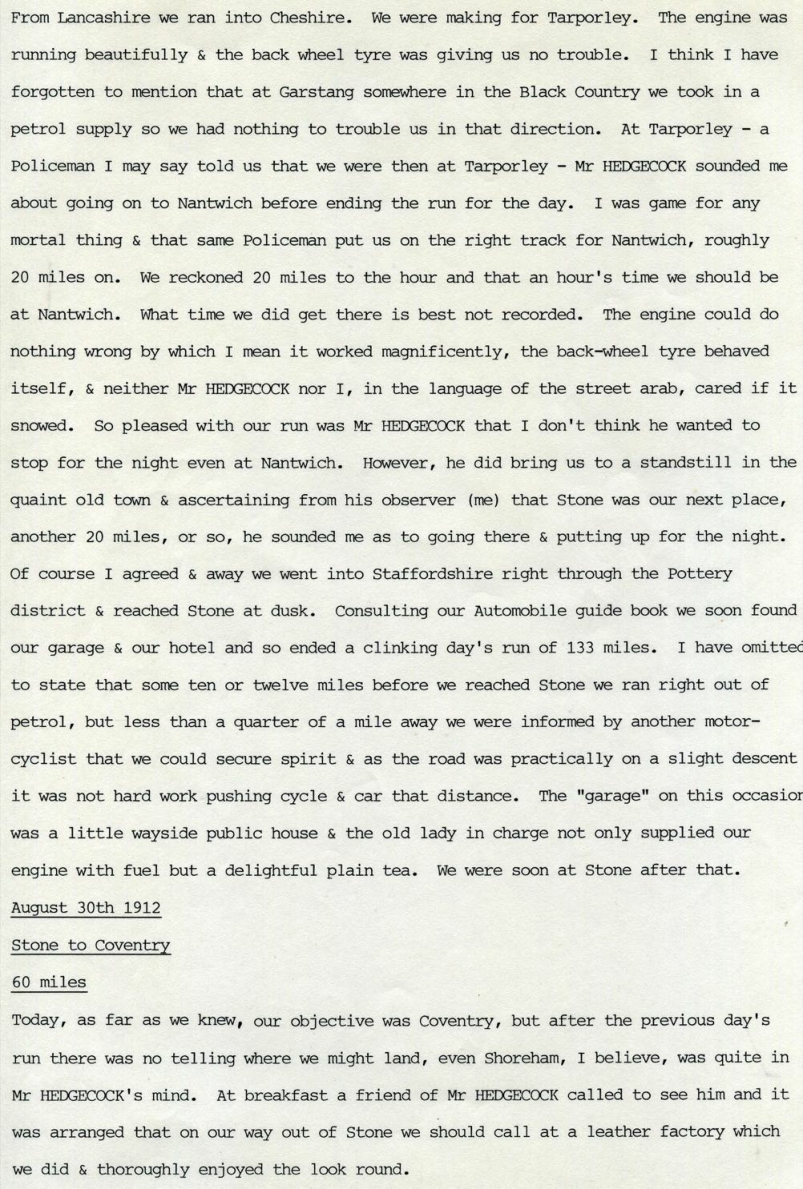
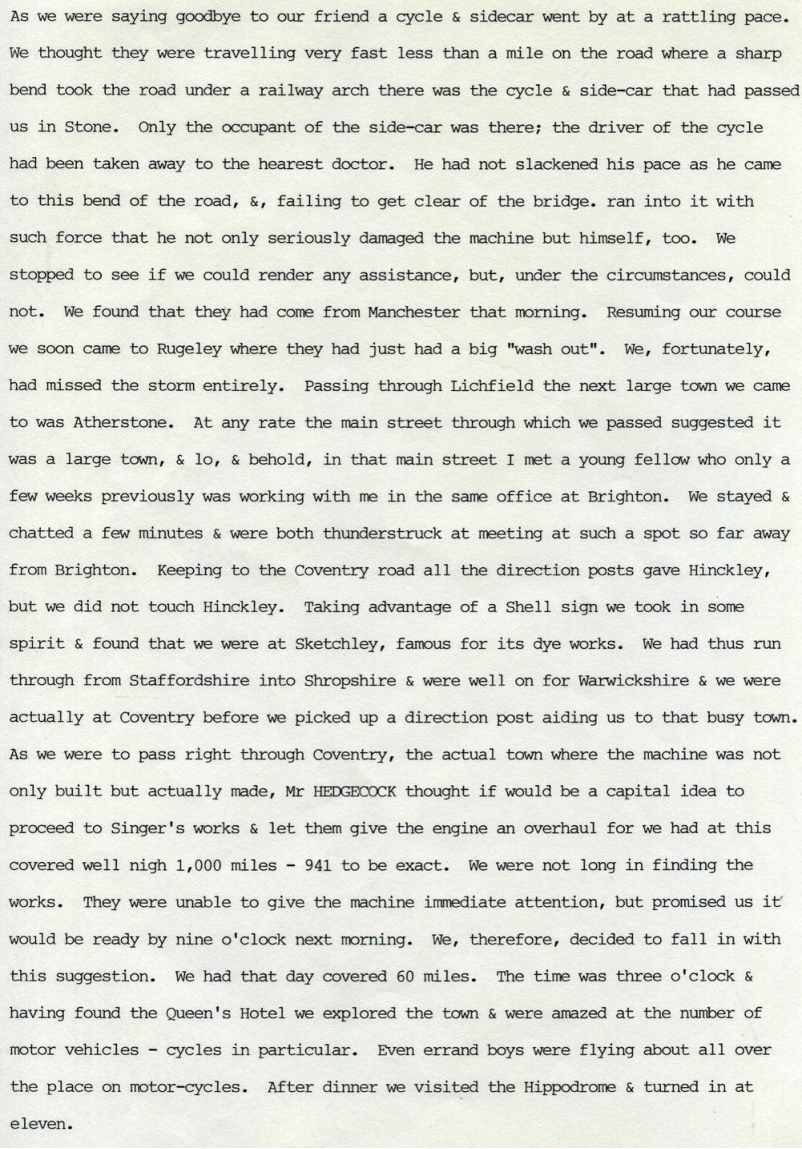
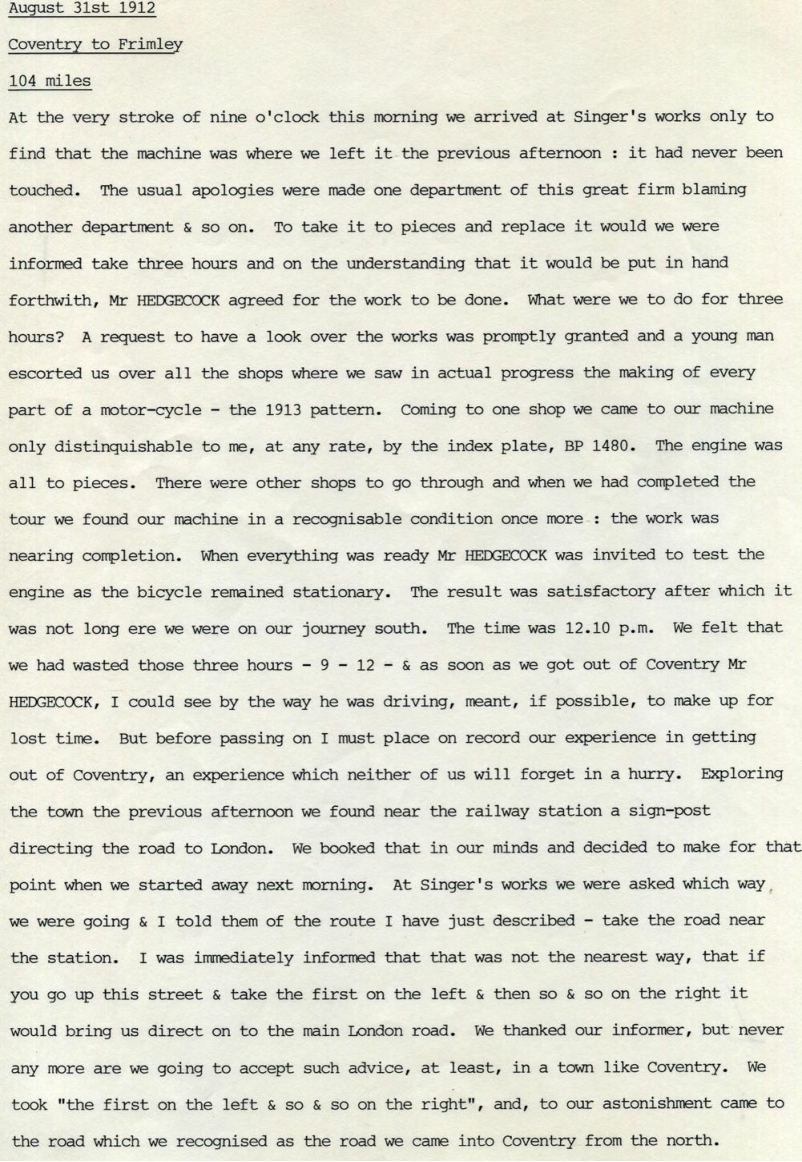
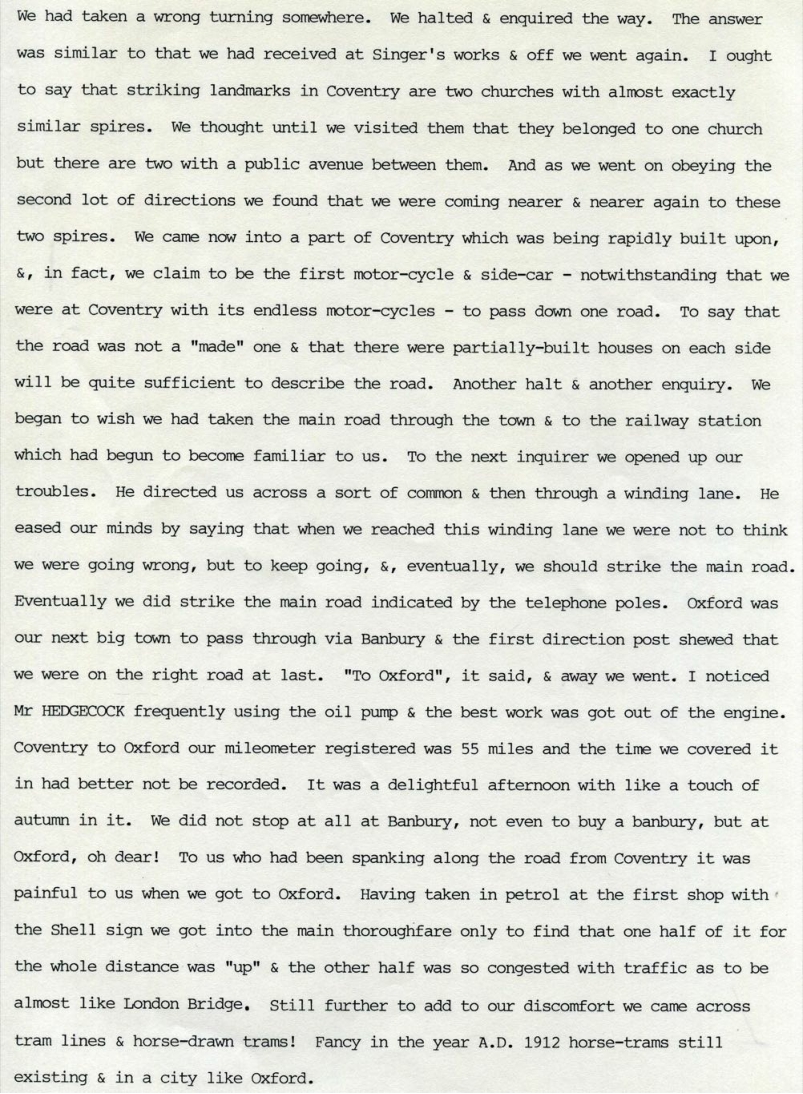
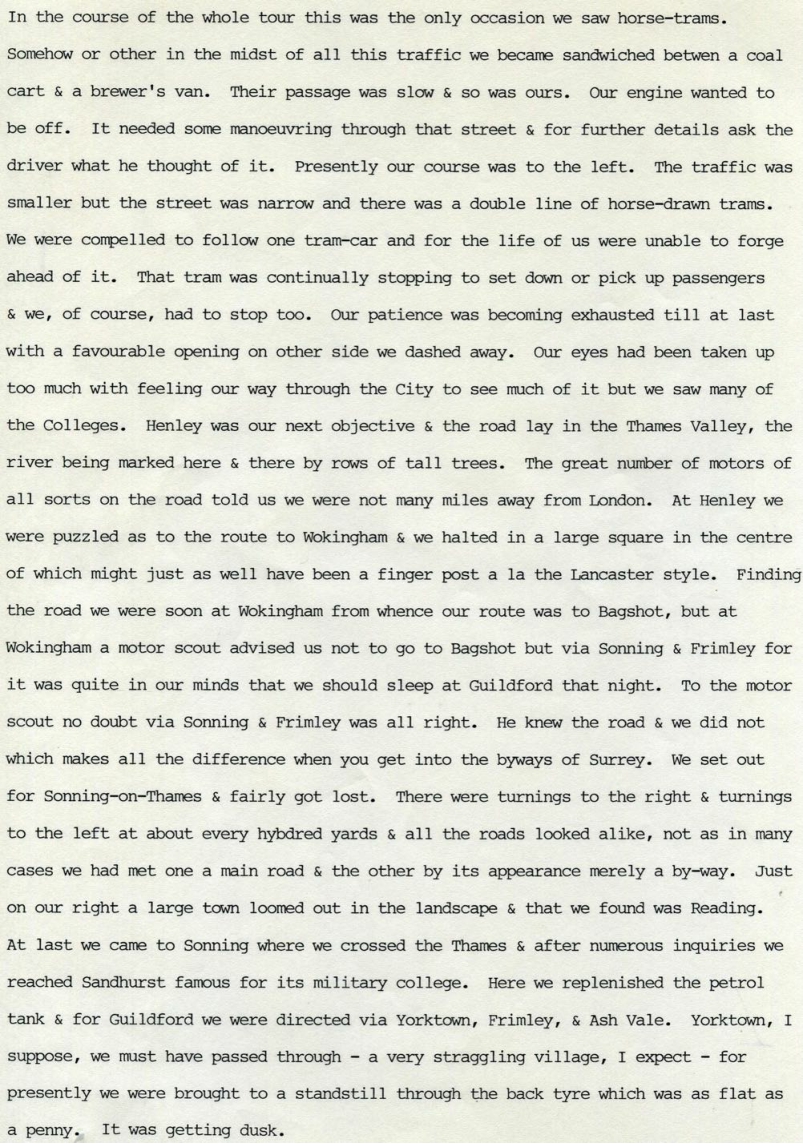
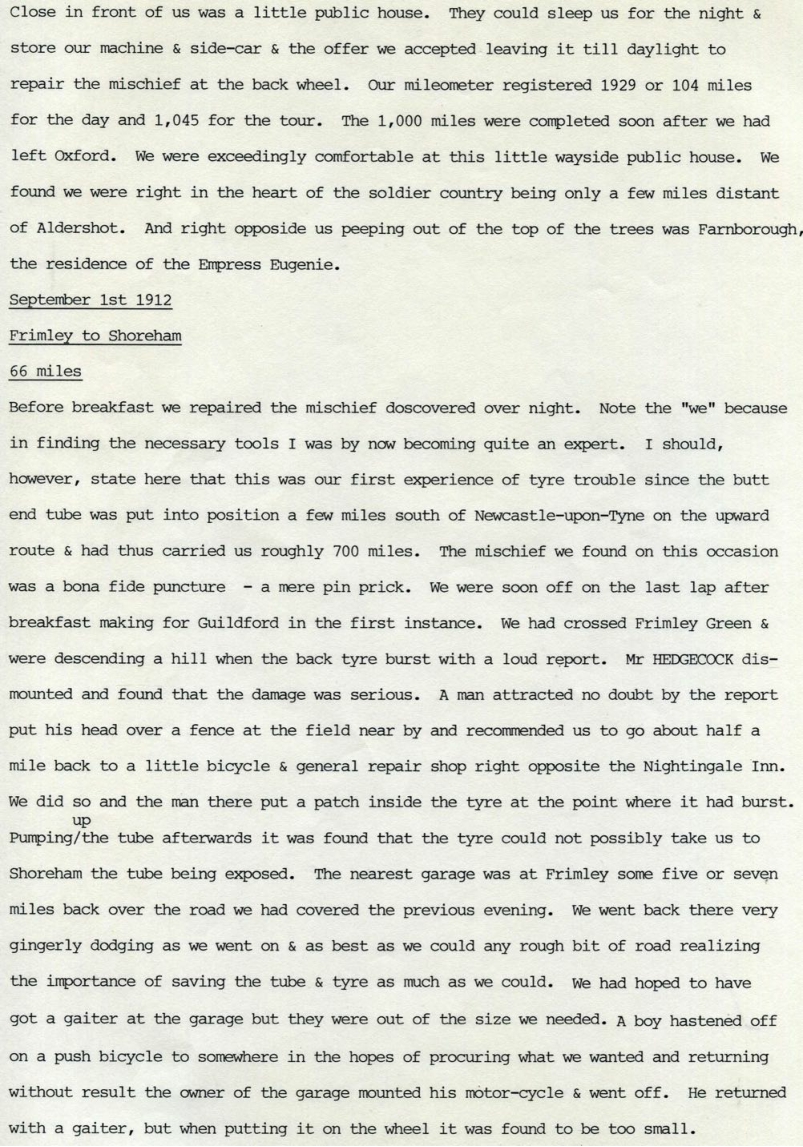
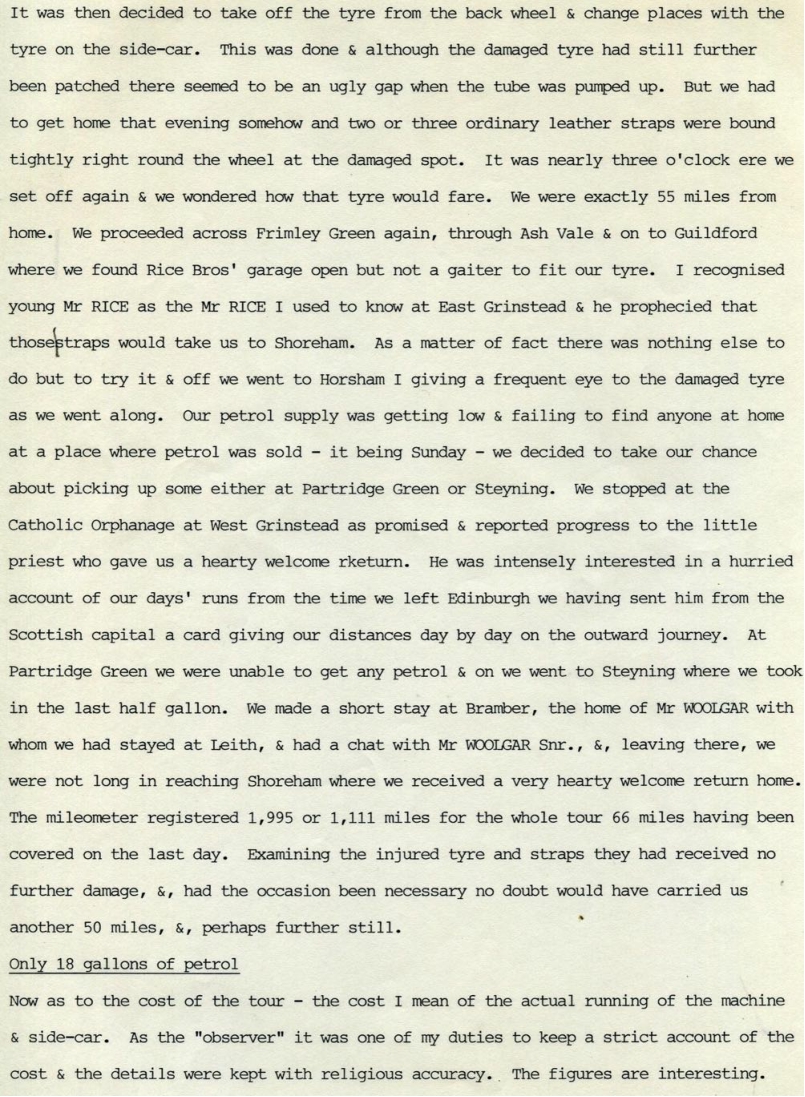
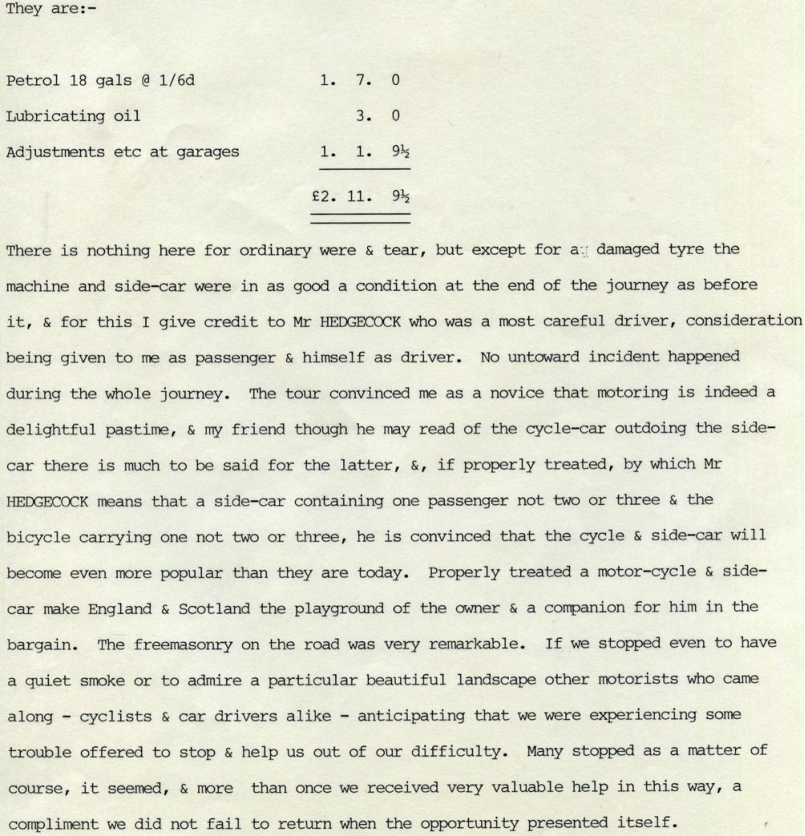
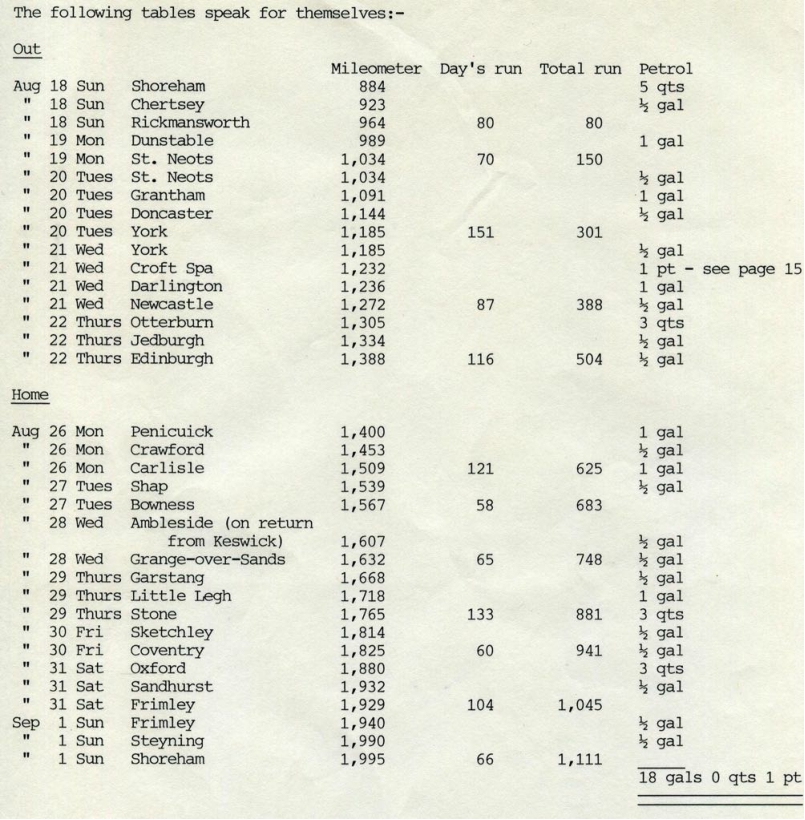 1912 Shoreham/Edinburgh Journal copyright Jan Townsend 2012
1912 Shoreham/Edinburgh Journal copyright Jan Townsend 2012
